Arima Onsen (有馬温泉) is one of the oldest hot spring towns in Japan, known for its unique golden hot spring and beautiful mountain scenery. If you find yourself in Osaka or Kobe, you can easily arrange a day or two to visit for a tranquil Japanese small-town experience and luxuriate in its many onsen offerings.
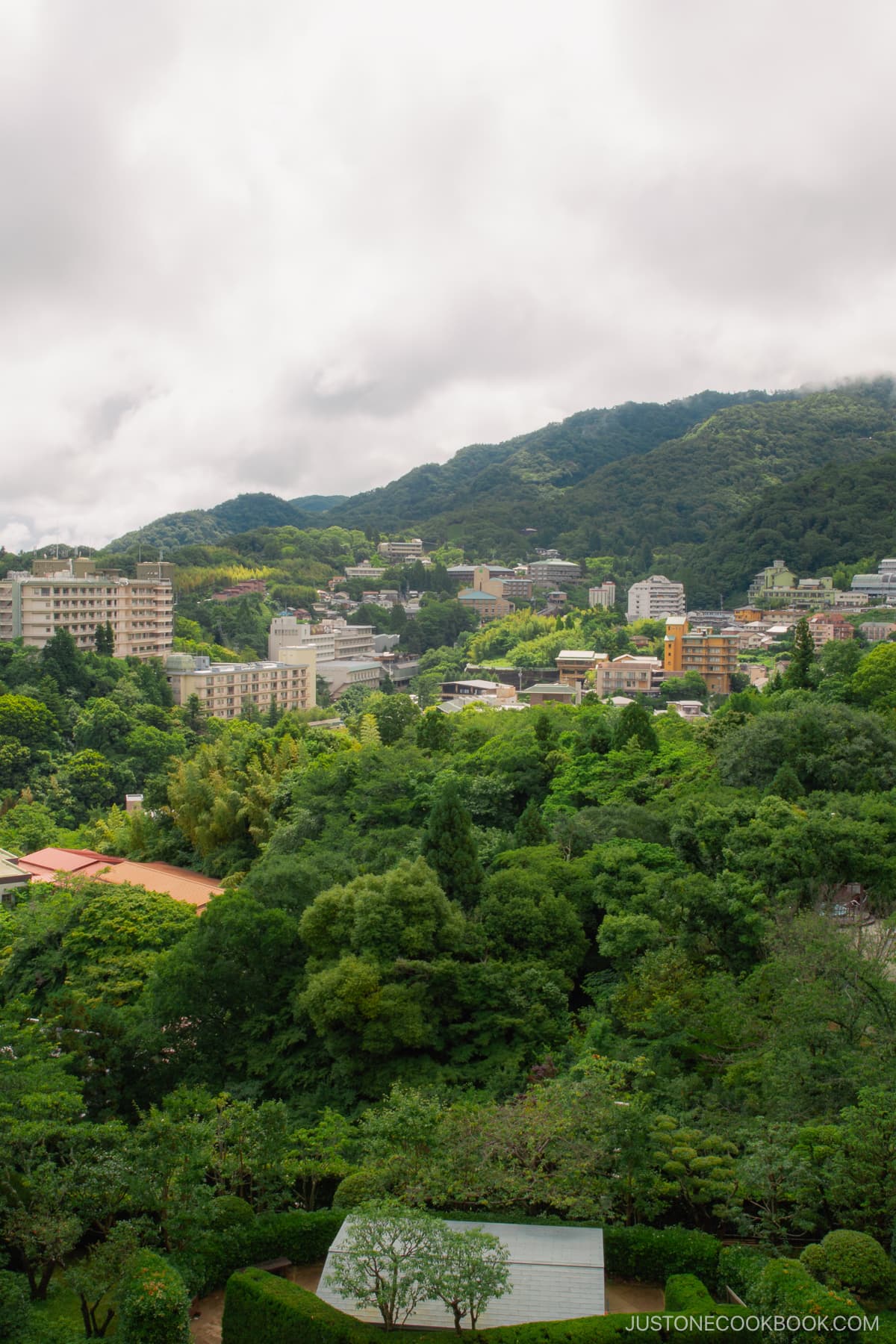
The first thing to know about Arima Onsen: it’s one of Japan’s three most famous hot springs, alongside Kusatsu and Gero onsen. Nestled amidst lush natural landscapes, its healing thermal waters are celebrated for their therapeutic benefits.
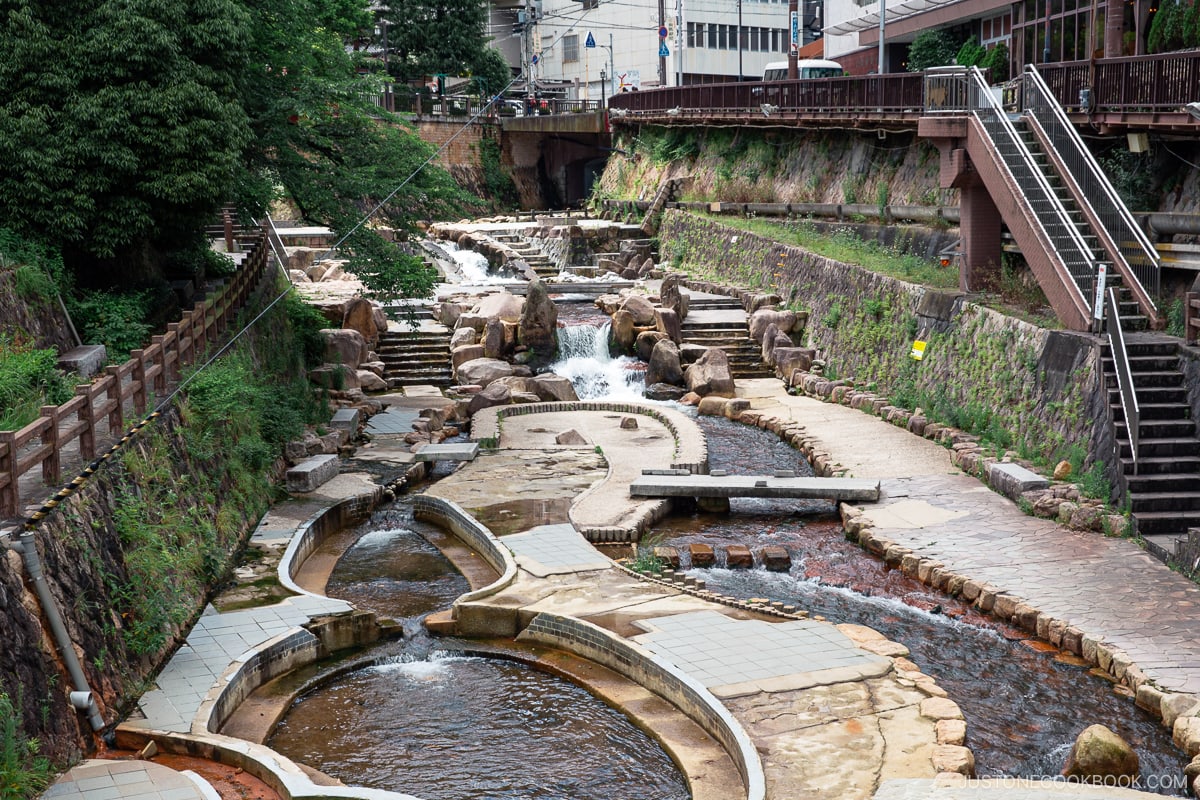
Despite its global fame not matching that of Hakone in the Kanto region, Arima, located near Kobe, has a rich history dating back nearly 1300 years.
This quaint hot spring town, embraced by the scenic Rokko Mountain, has consistently ranked among the finest onsens in western Japan. Its allure lies in its beautiful scenery and, of course, its exceptional hot spring offerings.
Table of Contents
The Unique Golden Hot Springs
What sets Arima Onsen apart from other hot springs is its fascinating golden hot springs, known as Kinsen (金泉), or gold spring. These springs are formed as the water rises from bedrock, carrying salt and iron. As it oxidizes, it takes on a distinctive golden hue.
There is also a clear type of hot spring called Ginsen (銀泉), or silver spring, which contains radium and carbonate. Throughout the onsen town, you can enjoy various bathhouses including open-air baths, private baths, and mixed-gender baths, so it is perfect for everyone!
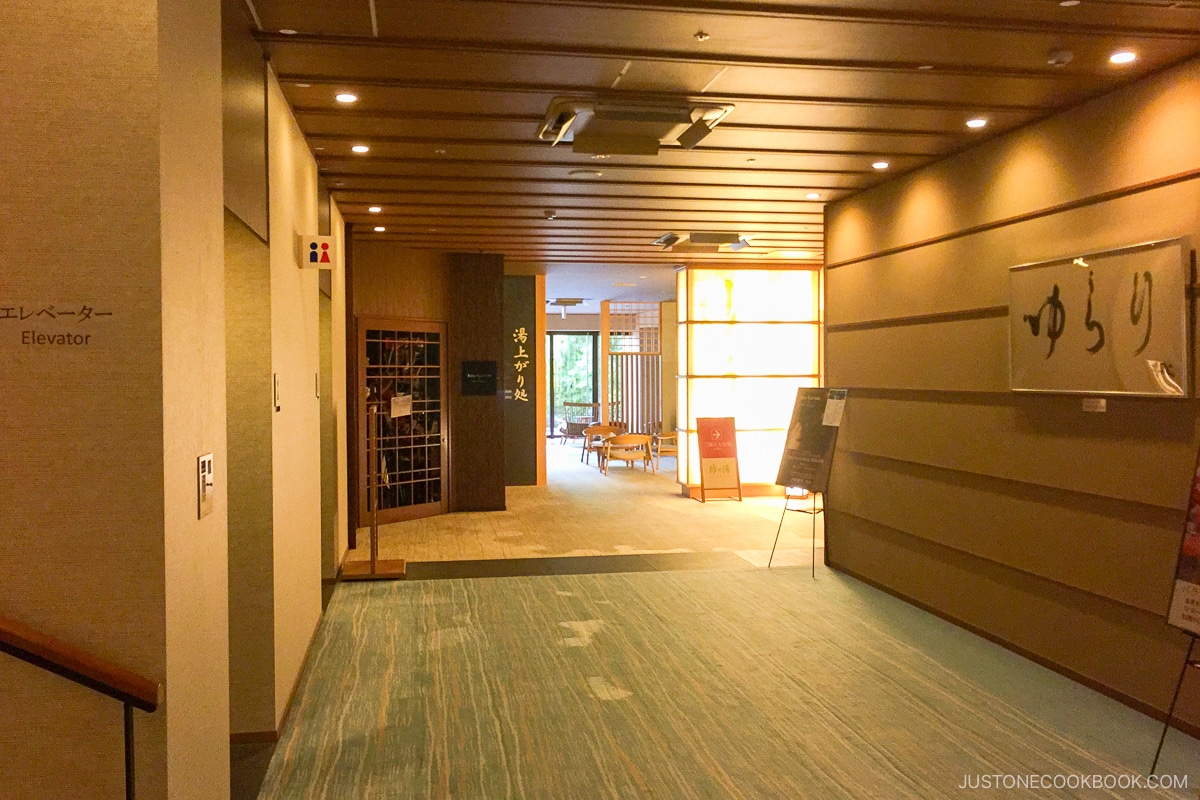
Hot Spring Skin and Health Benefits
Hot Springs are a great way to soak and relax your body, especially after a long day of travel. The hot springs in Arima Onsen are particularly beneficial for your skin and overall health. The iron deposits in the Kinsen are said to help with skin ailments and muscle pain, while the Ginsen is said to cure various muscle and joint ailments. If you’re feeling a little sore, these are the onsens for you!
How To Get To Arima Onsen
If you are traveling by car, Arima Onsen is just a one-hour drive from Osaka or just 30 minutes from Kobe. For public transportation, head to Sannomiya Bus Terminal in Kobe, where you can purchase tickets for the KR Kousoku bus (高速バス) that goes directly to Arima Onsen. You can also catch an express direct bus from Shin Osaka (新大阪) and Shin Kobe (新神戸) bus terminals.
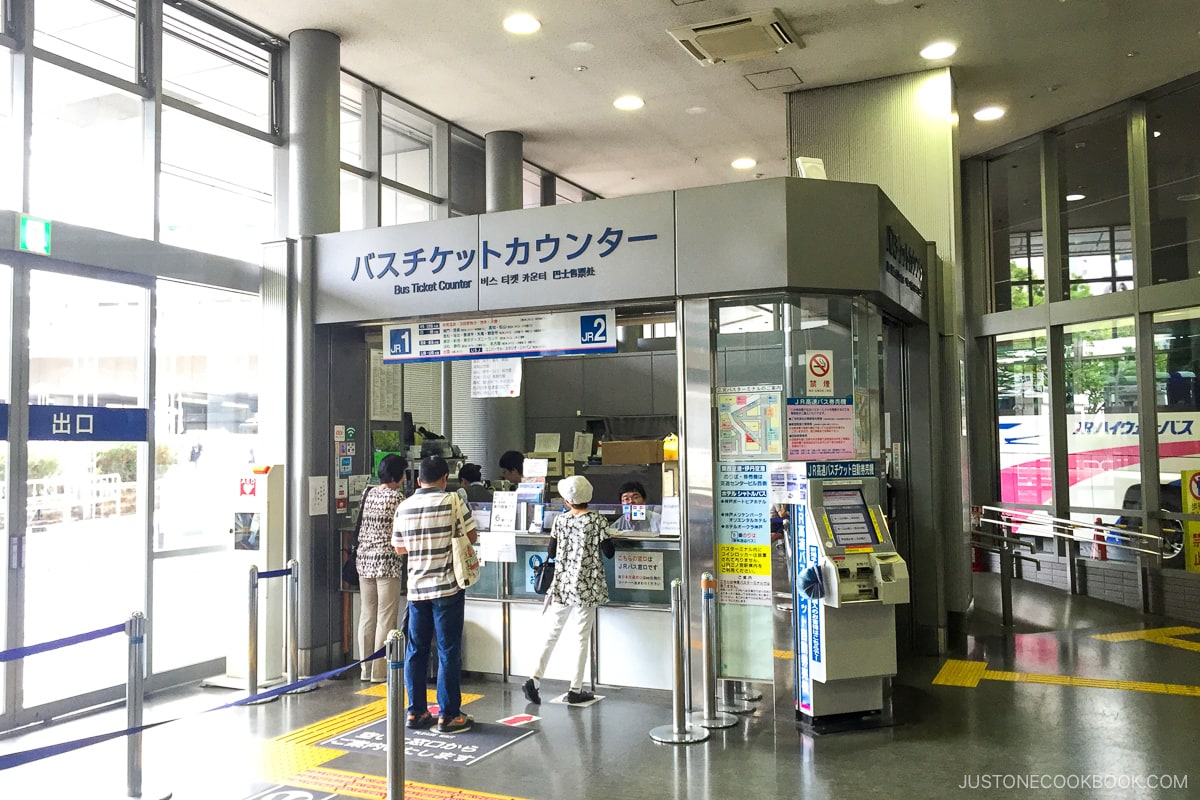
At the bus terminal, you can check the departure times or visit this link.
The hotel we stayed at (Arima Grand Hotel) has a shuttle that picks up passengers at the JR Kousoku bus stop. Call the hotel to make a pickup arrangement before arrival or at the bus stop. They will come to pick you up in less than 10 minutes.
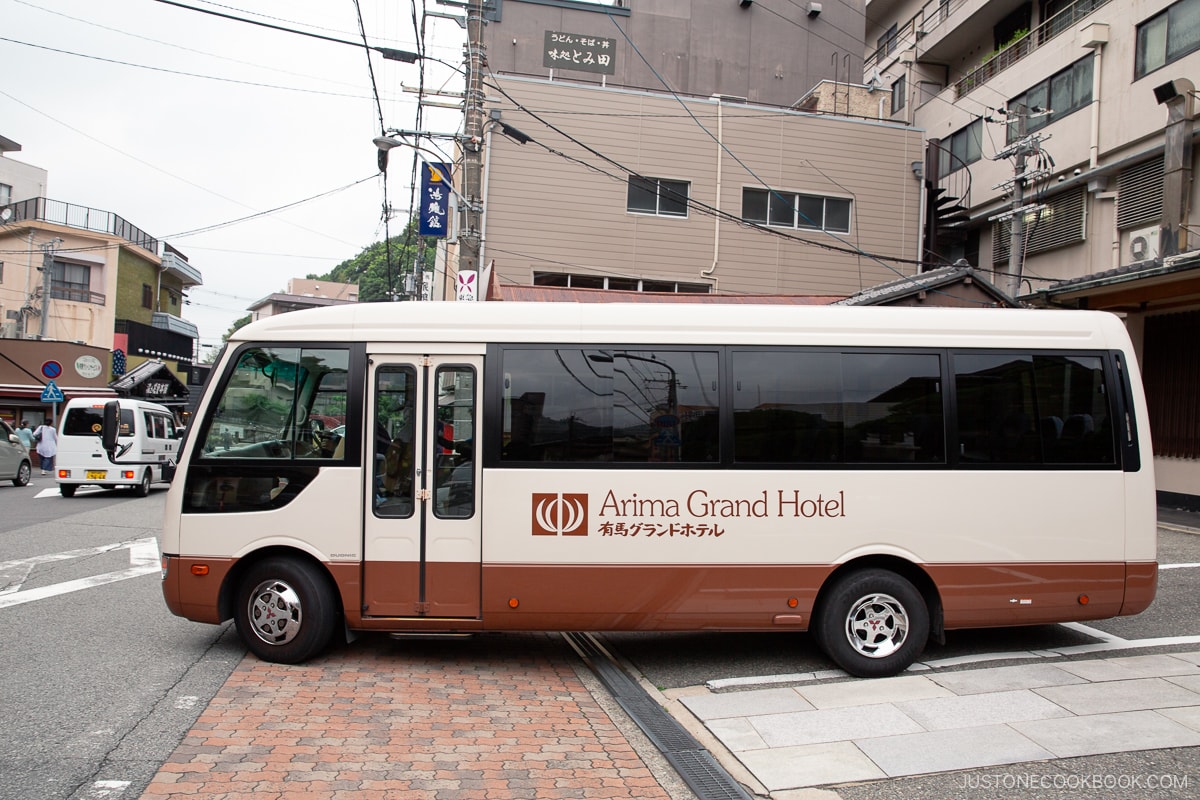
Alternatively, you can board the Shintetsu Arima Line from Shin-Kobe Station. The Arima Line is operated by Kobe Electric Railways and runs between Arima Onsen Station and Minatogawa Station. From Shin-Kobe Station, you can access the Shintetsu Arima Line via the municipal subway system at Tanigami Station.
What to do in Arima Onsen
Arima City Center
Right after our arrival in Arima, we wasted no time and promptly hopped on the hotel shuttle bus to check into our room. After enjoying a light afternoon snack, we ventured out to explore downtown Arima, eager to see what the town has to offer.
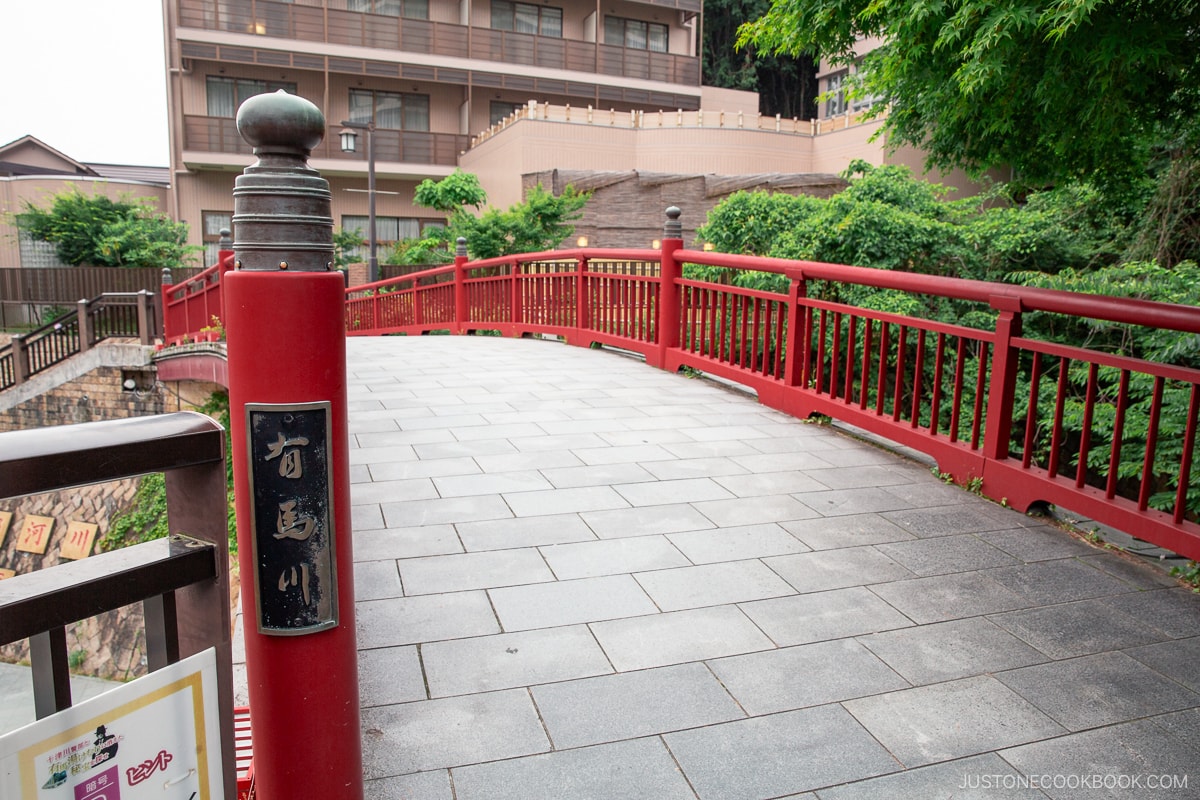
Here’s the beautiful Arima River that flows right through Downtown Arima.
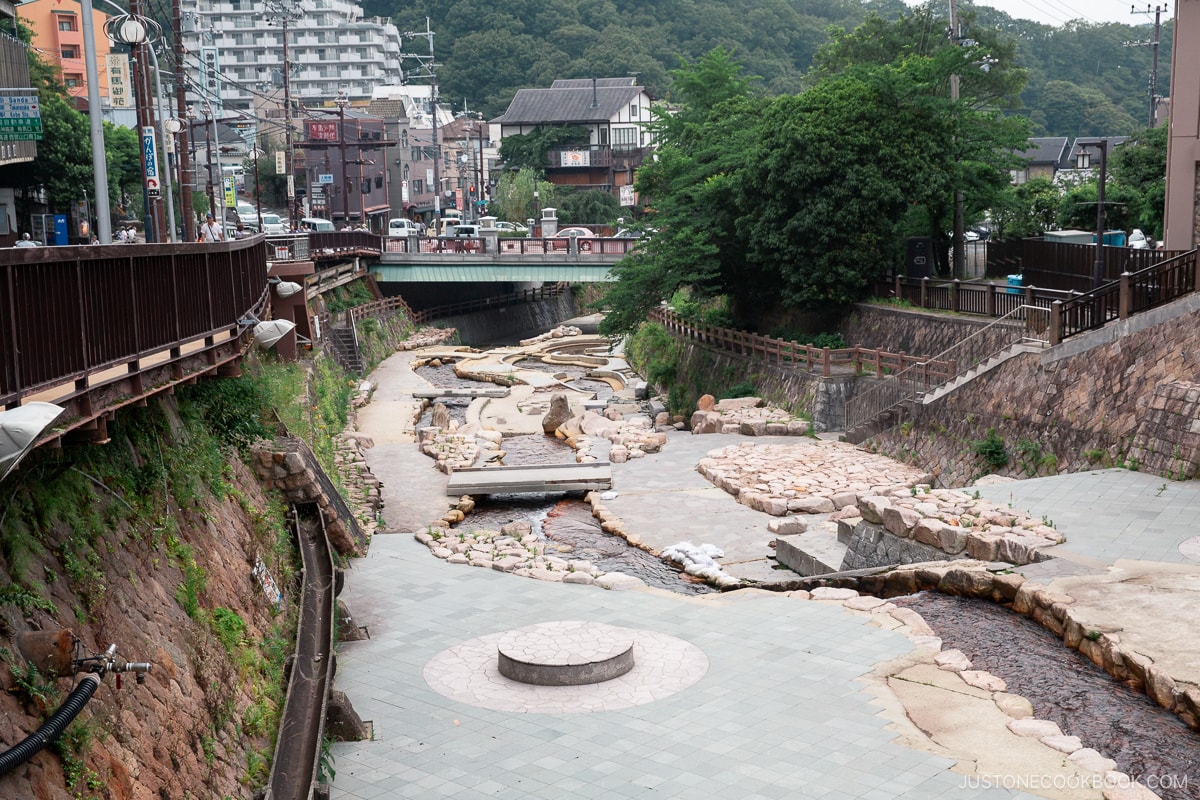
Cross Nene Bridge (ねね橋), which is also a great spot to admire the Arima River and its surroundings.
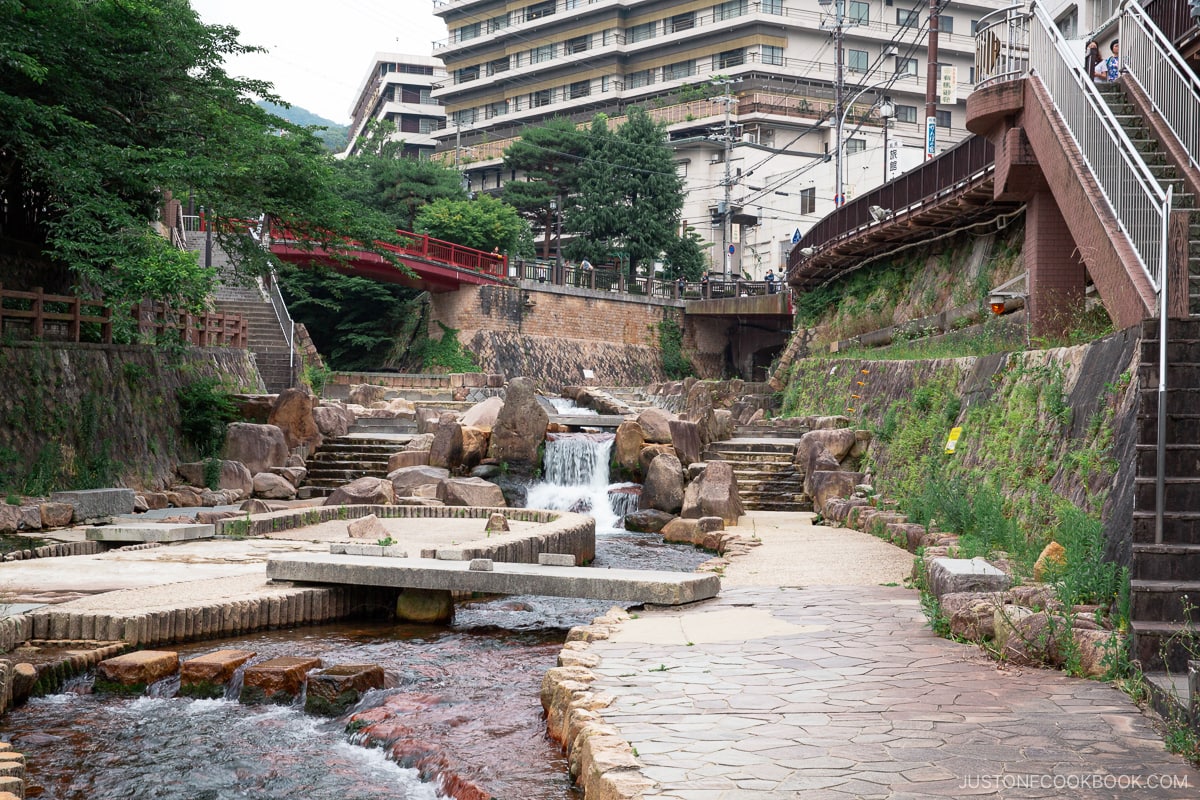
There are walkways in the middle of the river that allow you to stroll around and enjoy the peaceful atmosphere.
Nearby, you’ll also find Yukemuri Hiroba (湯けむり広場), a lively square where you can soak in the town’s atmosphere and appreciate all the statues.
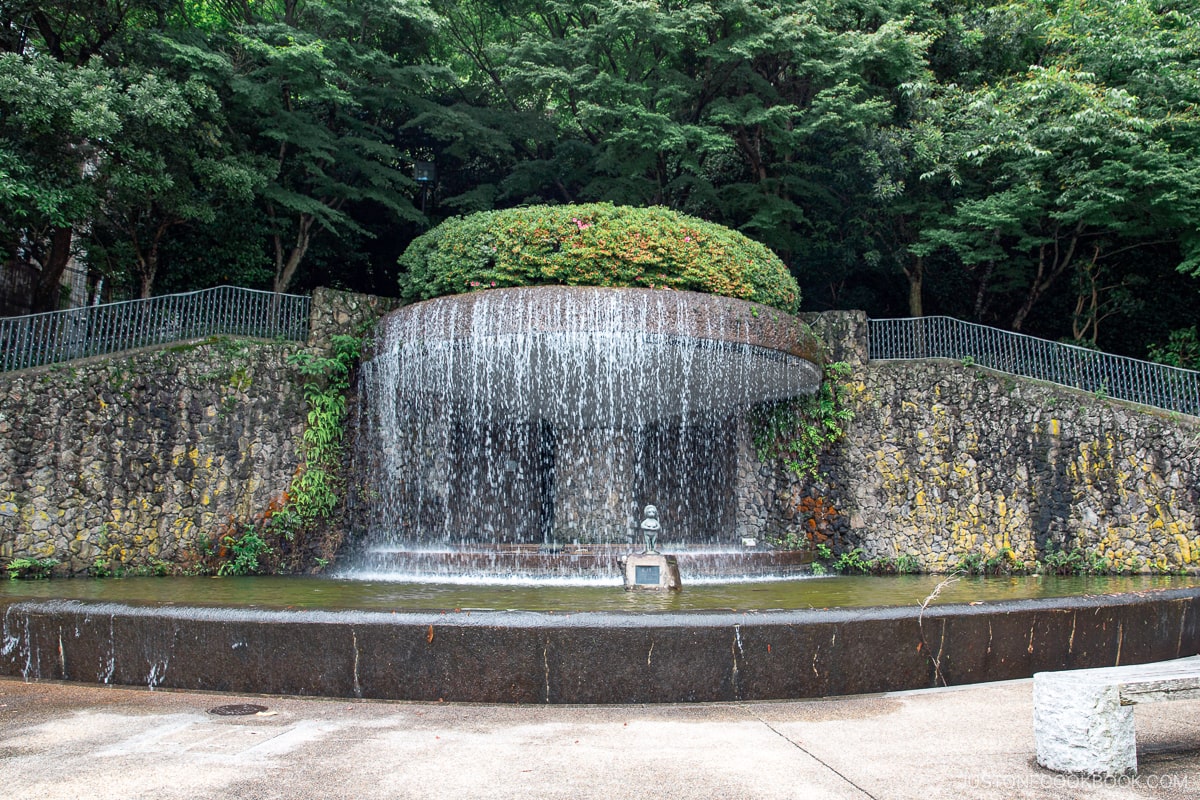
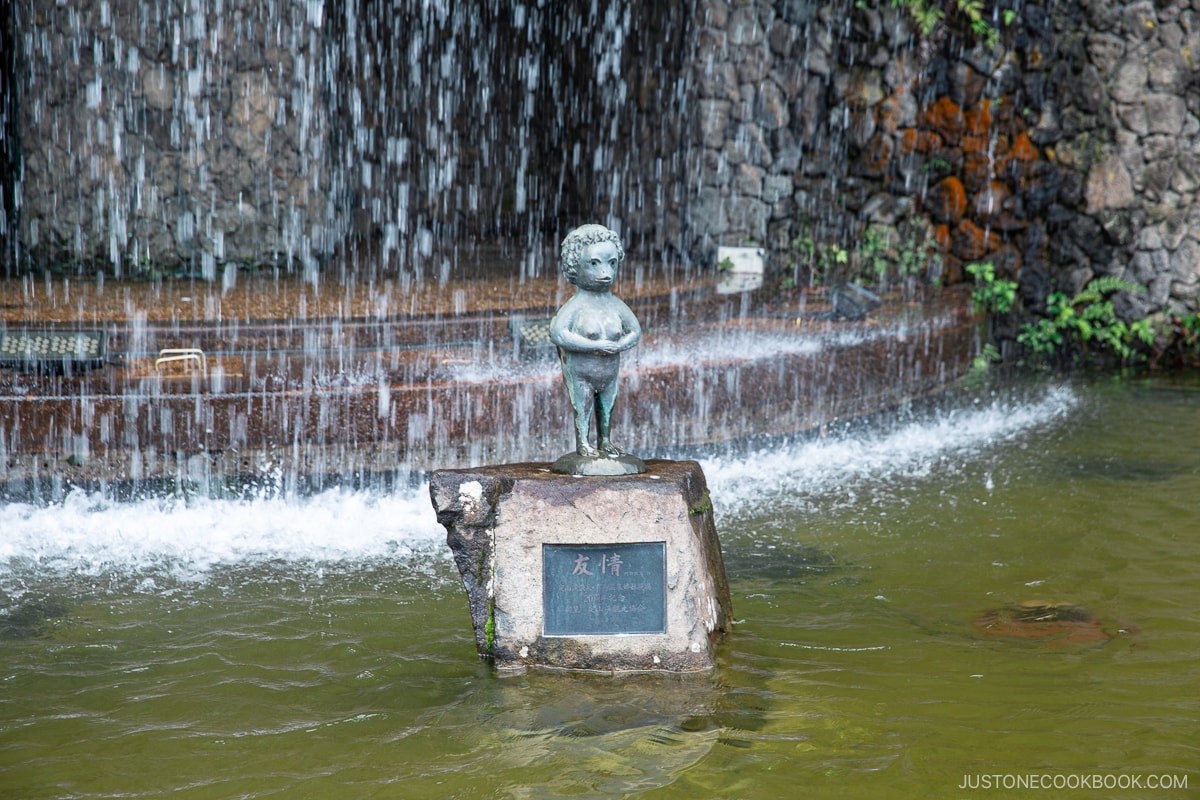
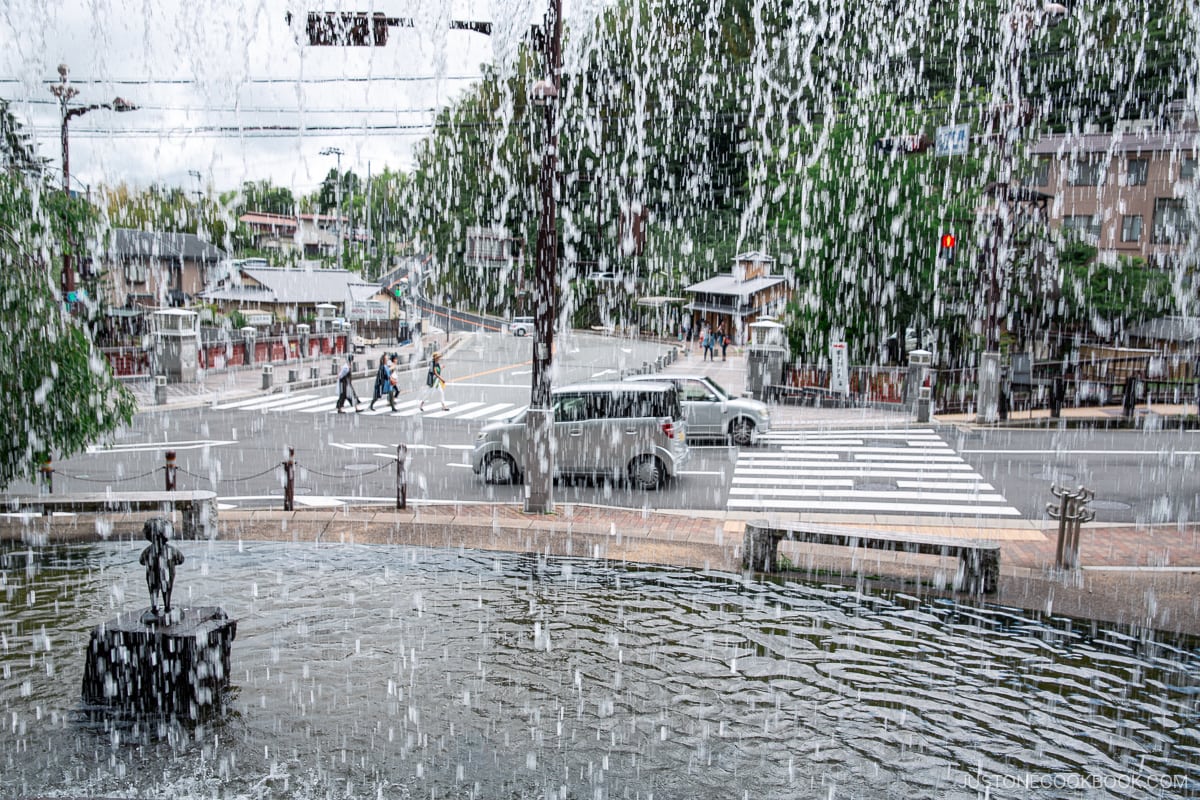
The small city center has sake and beer stores, gift shops, and a local soda cracker tansan senbei shop. It’s a great area to buy some souvenirs to take home!
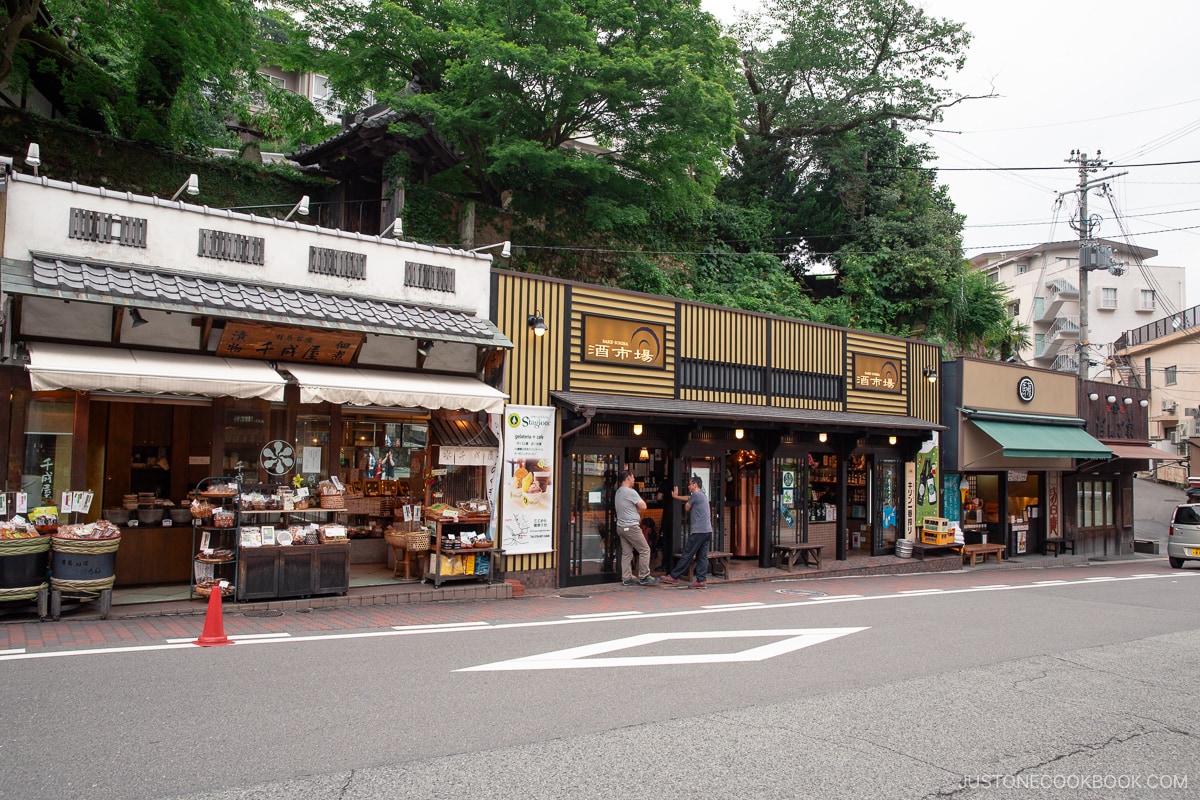
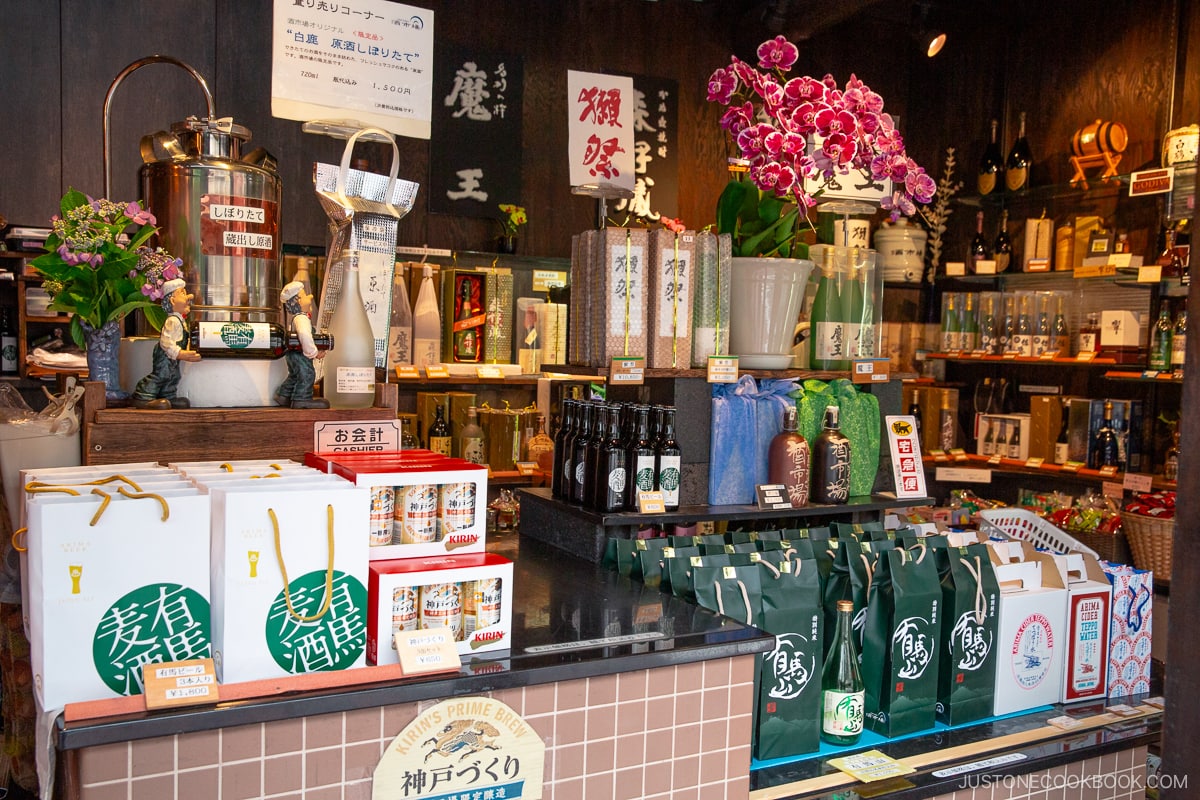
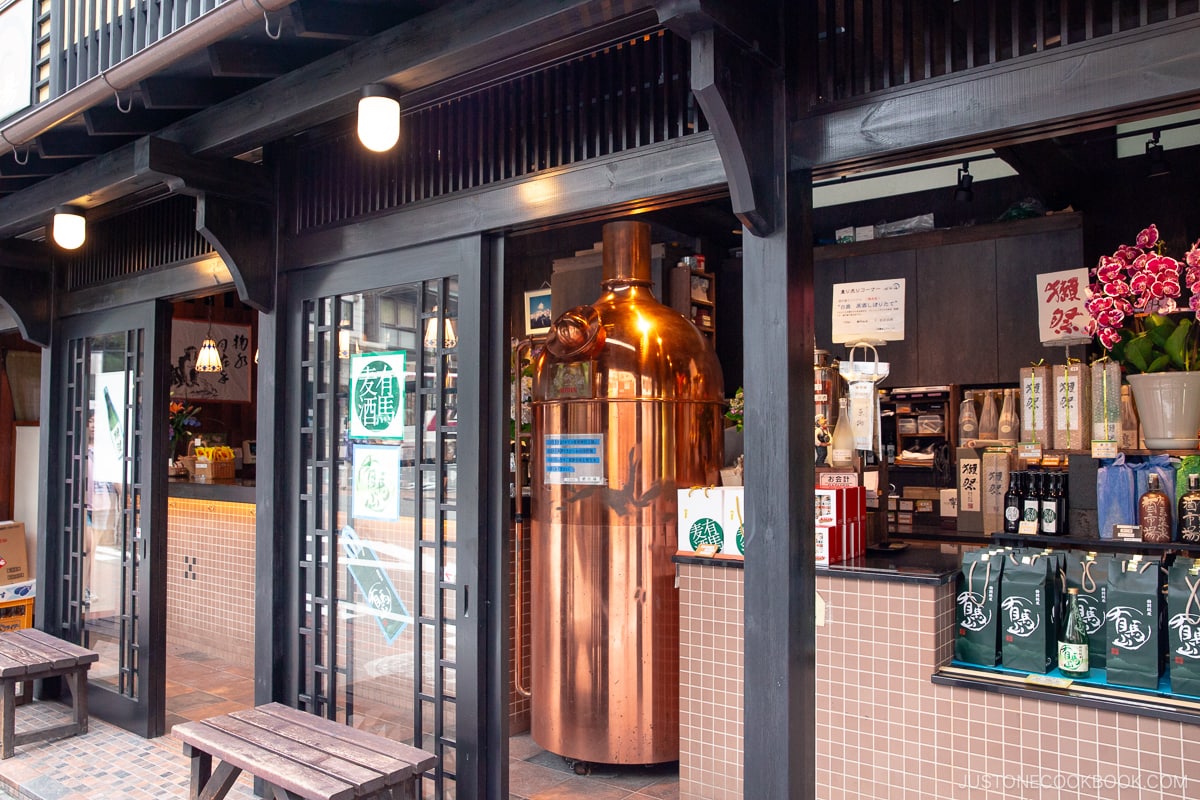
This is where the famous Tansan Senbei (炭酸せんべい) is made in Arima. The batter drips down into a press, where it is heated and transformed into crackers. The workers remove the excess flakes before packaging the rice crackers.
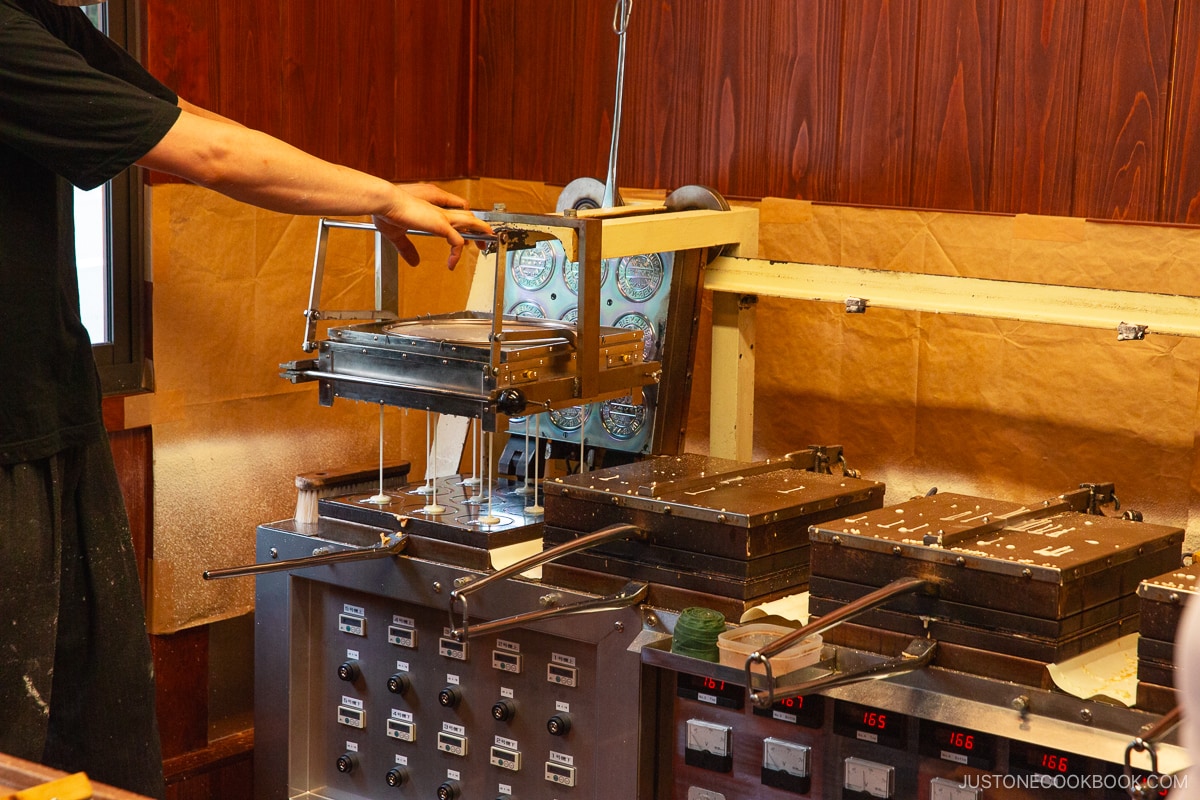
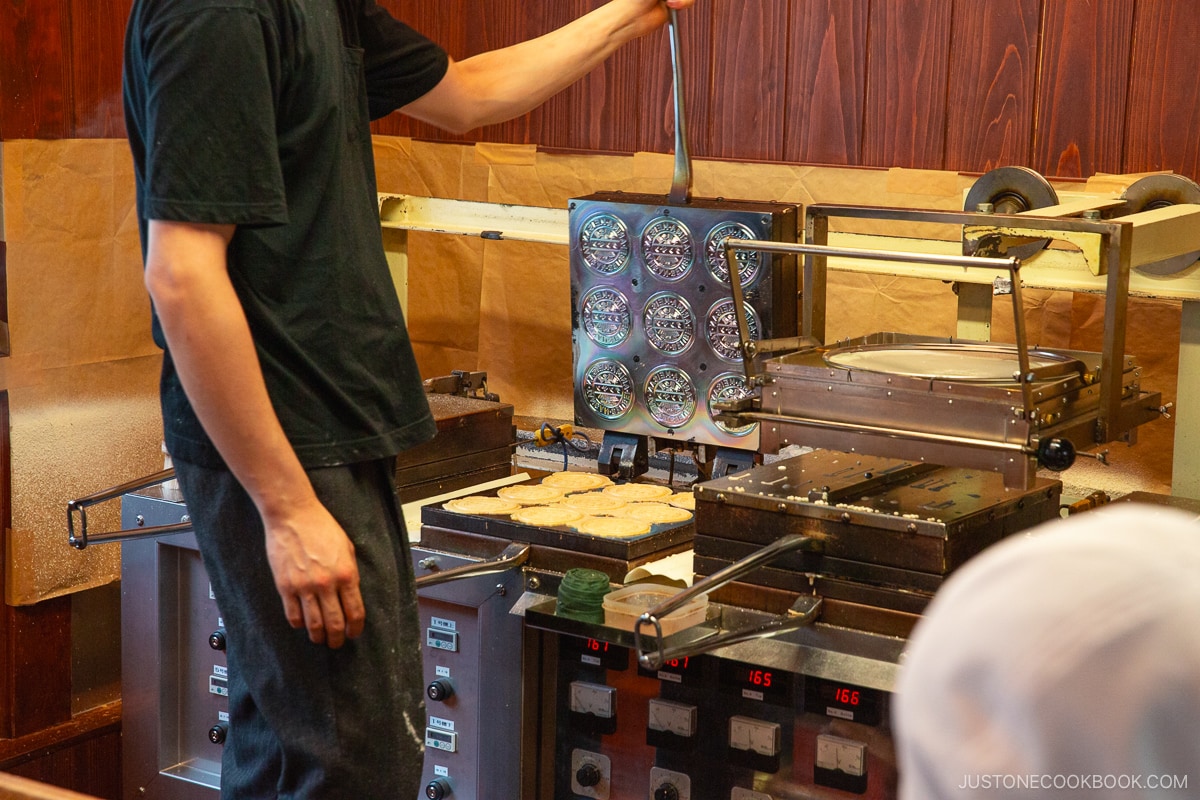
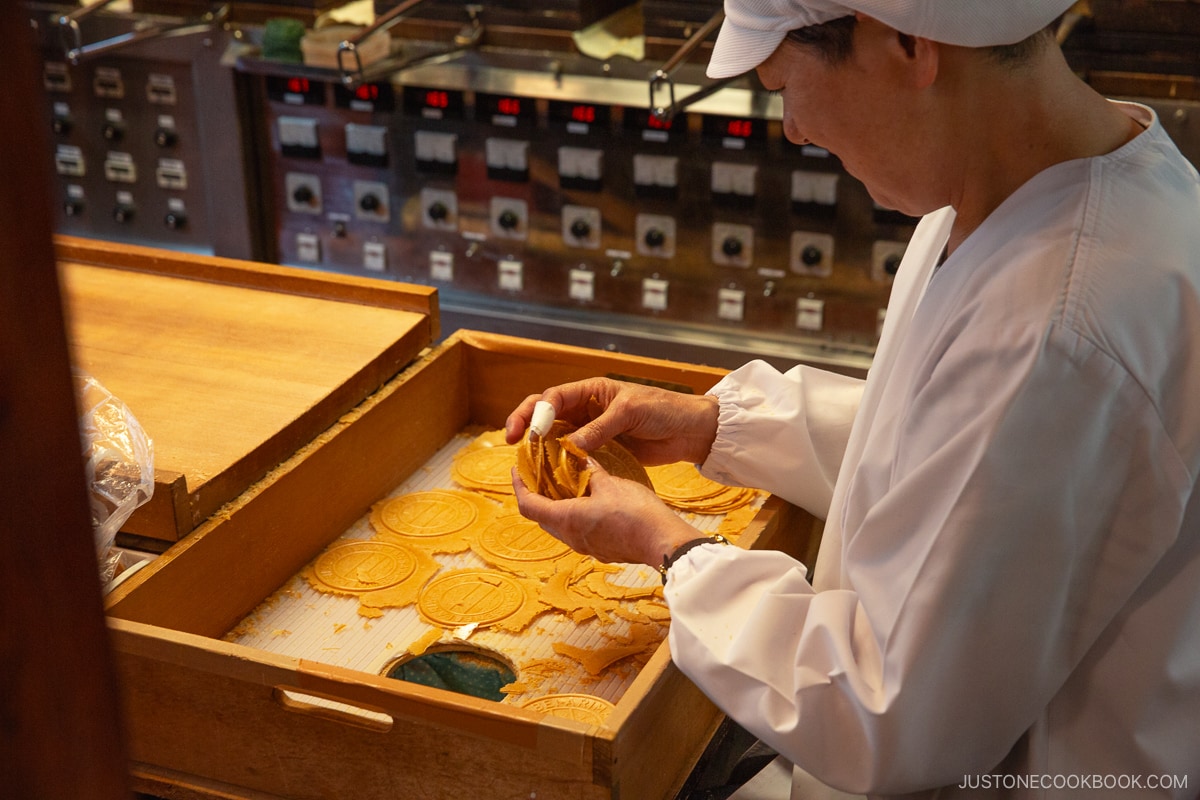
Kin No Yu
One of the most iconic hot springs in Arima is Kin no Yu, where you can enjoy the golden water hot springs and even carbonated water hot springs, which help with sore muscles and body aches. Just outside is Taiko no Ashiyu, a small foot bath high in sodium chloride and kept at 42.3 degrees Celsius.
This combination effectively relieves bruises, achy joints, and muscle aches, and the best part is, it’s free of charge! After all the traveling, what better way to relax? There is a sister hot spring called Gin no Yu, where you can enjoy the silver water hot springs.
Kin no Yu admission fee costs 800 yen (650 yen on weekdays) for adults and 350 yen for children. Gin no yu costs 700 yen (550 yen on weekdays) and 300 yen respectively. Alternatively, you can buy a pass giving you access to both for 1200 yen (prices in 2024).
Mt. Rokko (六甲山)
Besides the city center area, another quick excursion around the area is Mt. Rokko (六甲山). The hotel also offered a shuttle bus that dropped us off at the Rokko Arima Ropeway. The view from the top of Mt. Rokko along with Hakodate and Nagasaki is considered one of the three great night views in Japan (日本三大夜景).
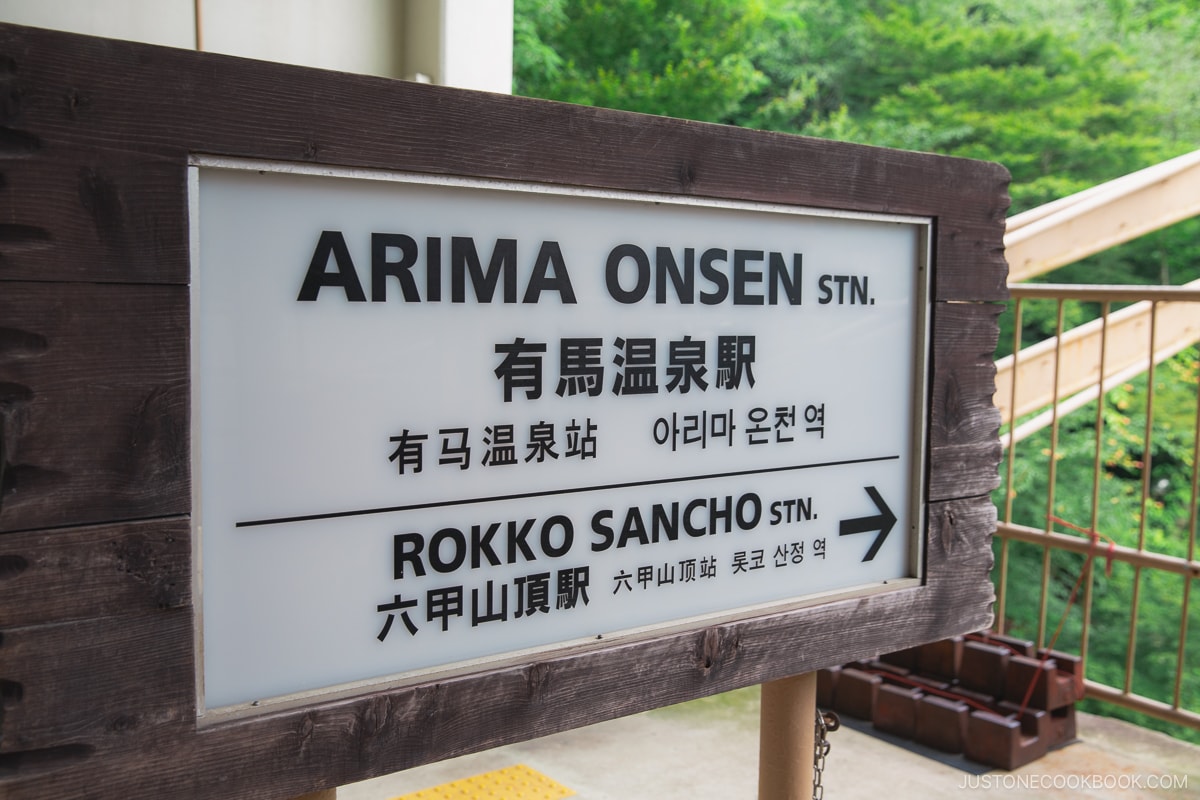
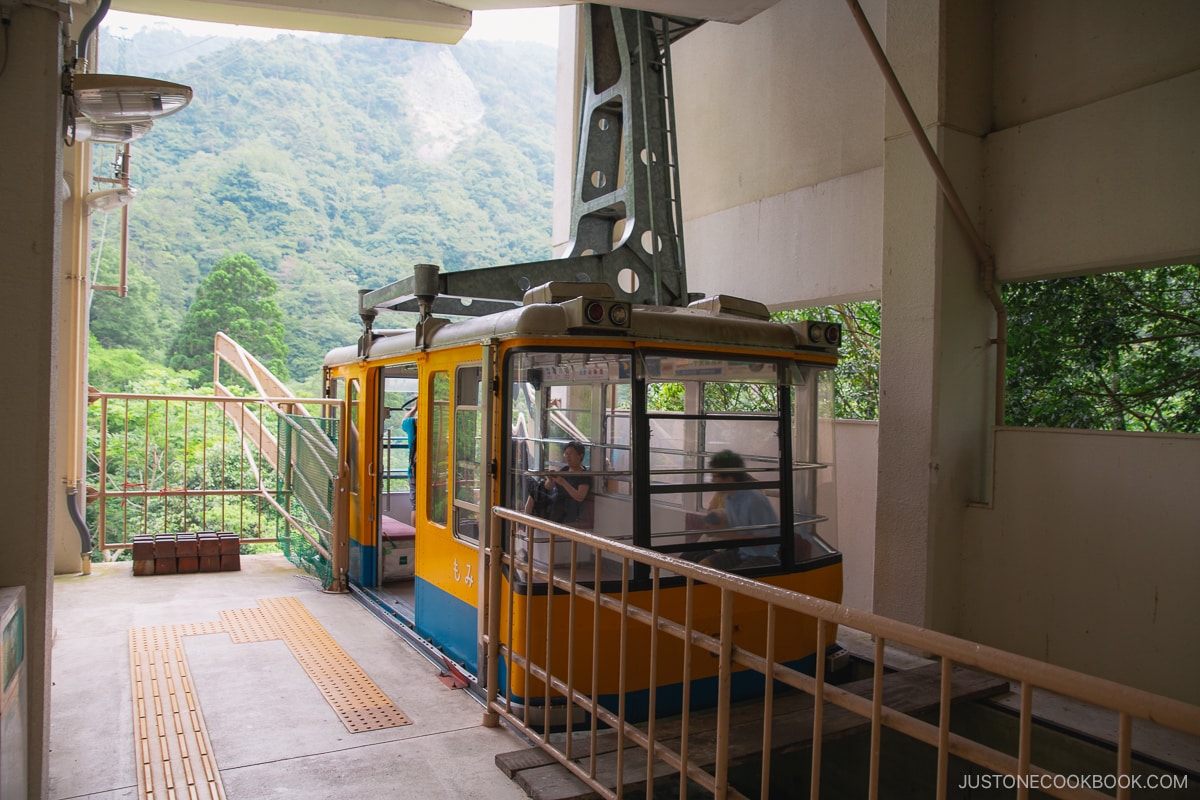
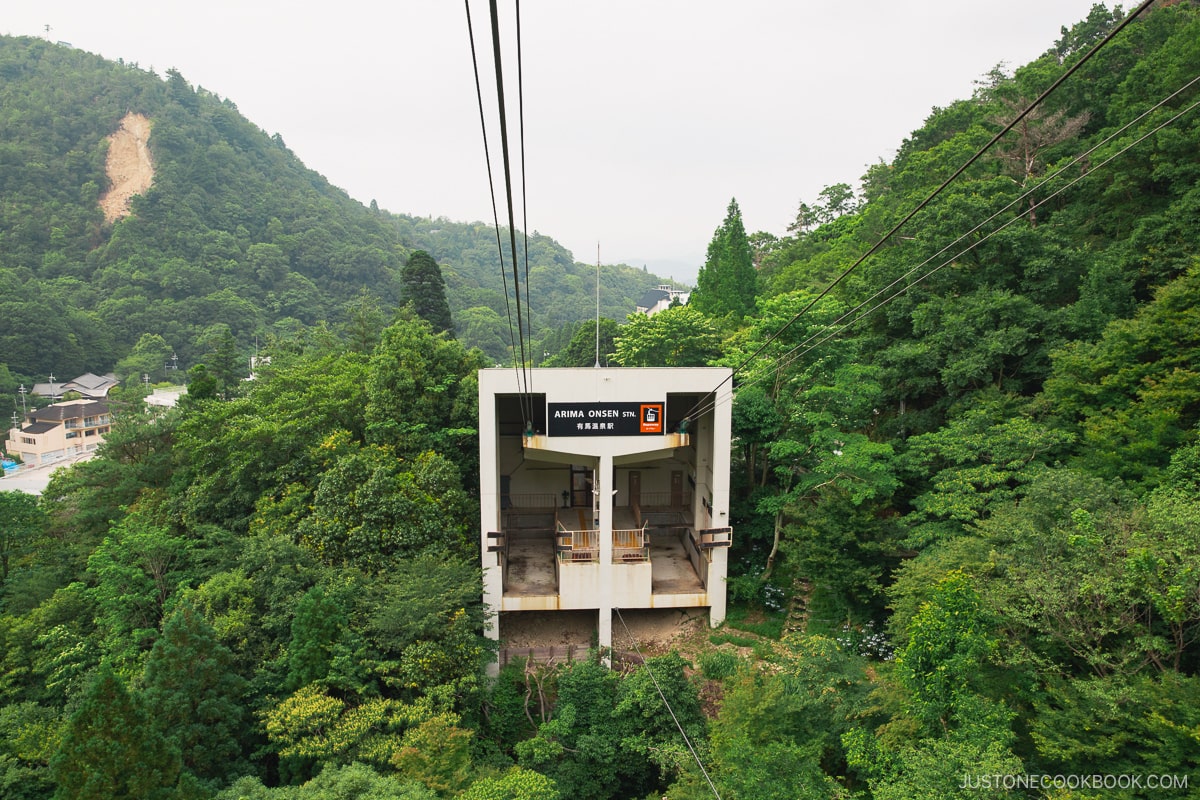
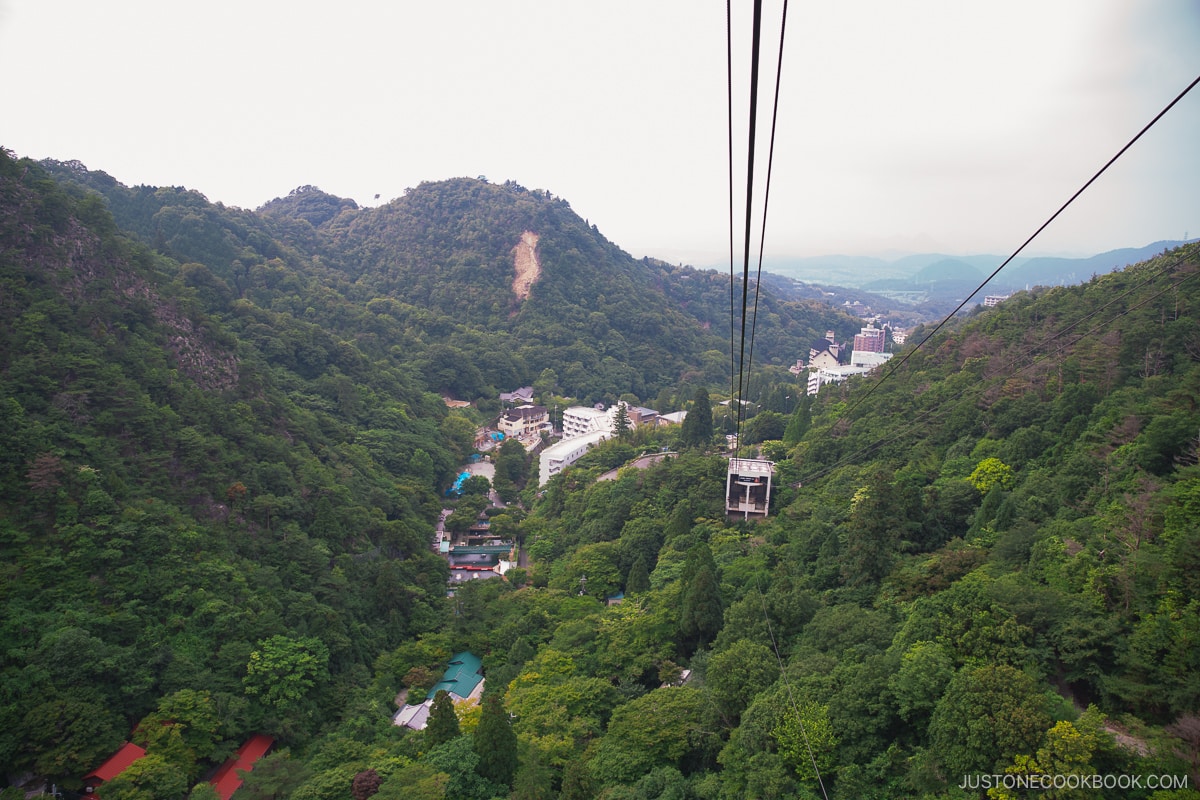
When we reached the summit, we climbed a small hill to discover a restaurant and gift shop at the mountain’s peak, complete with a balcony offering breathtaking views of the harbor and city.
Unfortunately, the day we visited was cloudy and overcast, so it was difficult to catch sight of Kobe and Osaka.
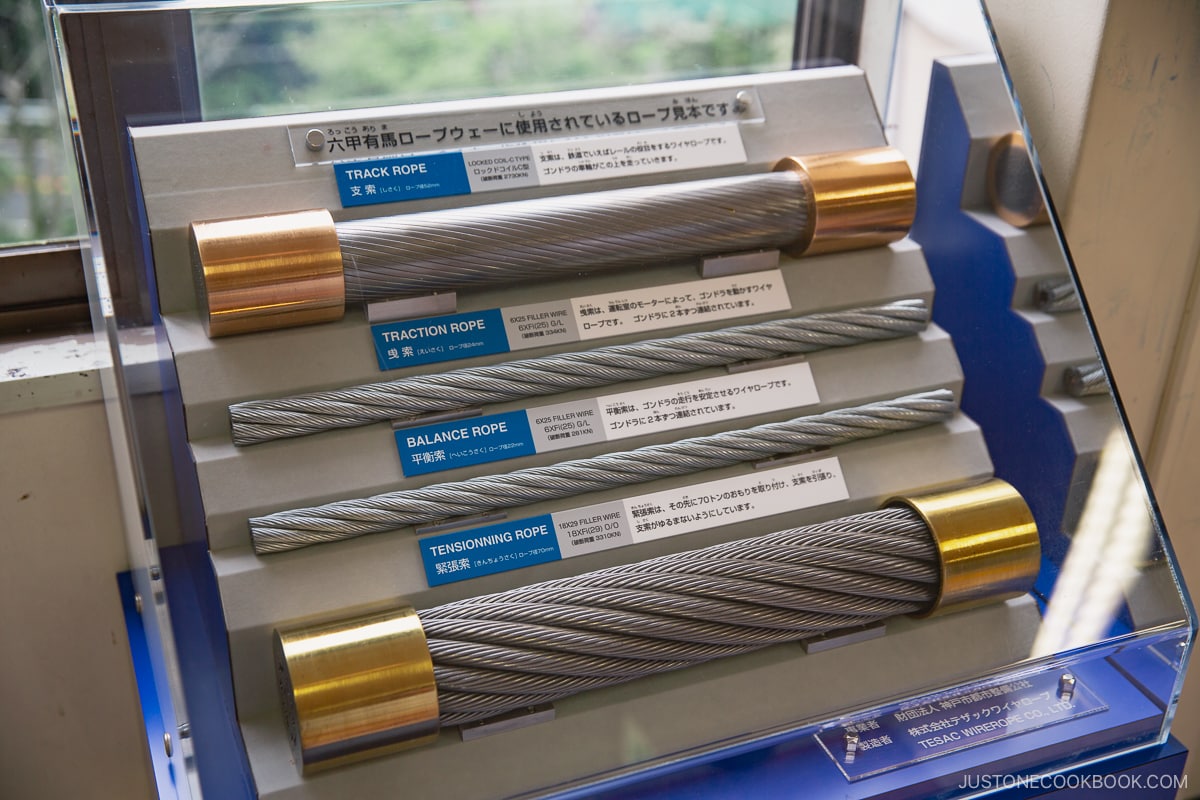
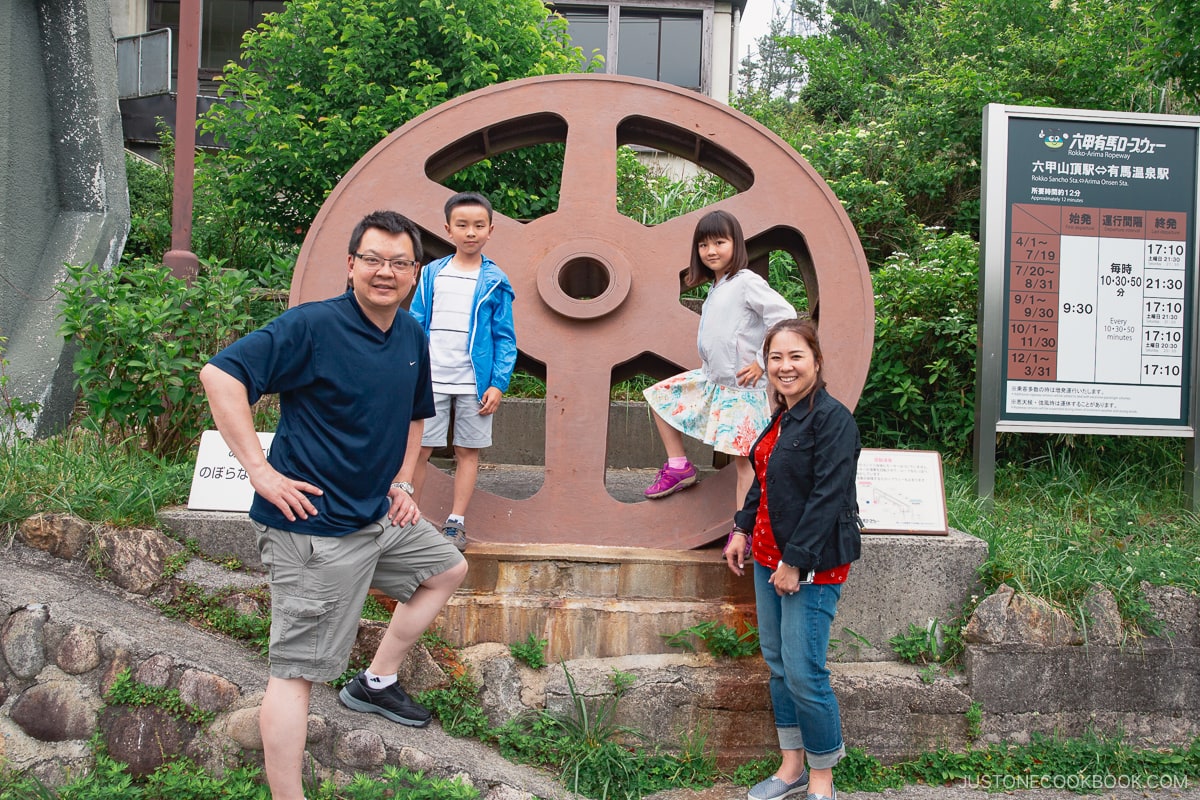
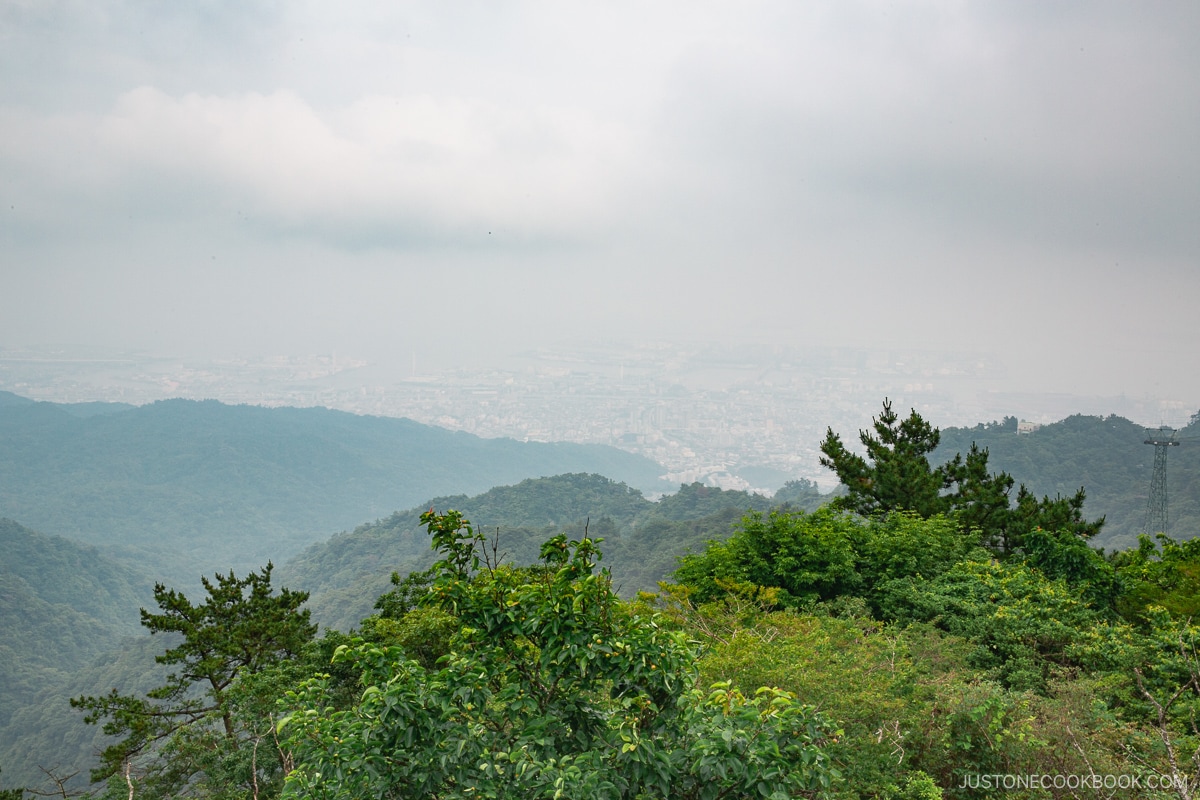
Arima Grand Hotel 有馬グランドホテル
There are many accommodation options in Arima, but after considering hotel reviews and, more importantly, dining options, we settled on the Arima Grand Hotel. Situated atop a hill, it may be a bit challenging to reach without a car. Luckily, the hotel offers shuttles that provide transportation from the bus station to the city center (just 5 minutes away) and the Rokko Arima Ropeway.
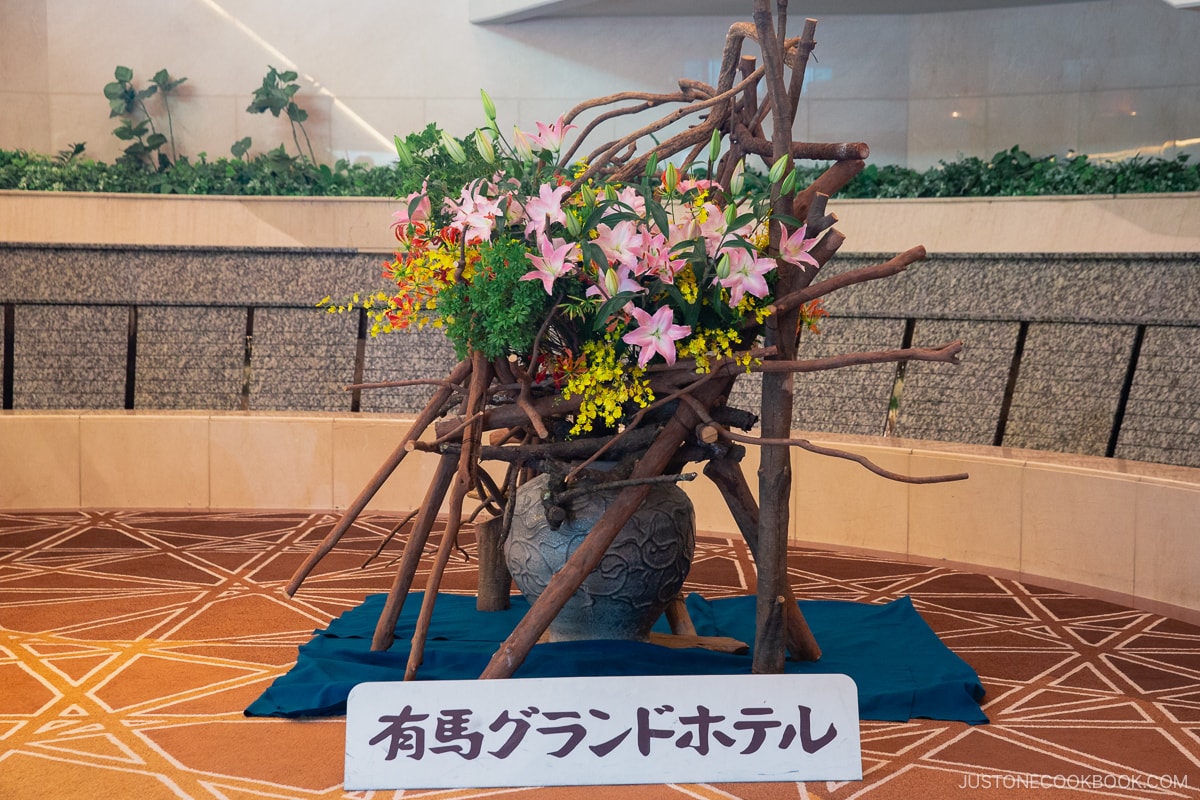
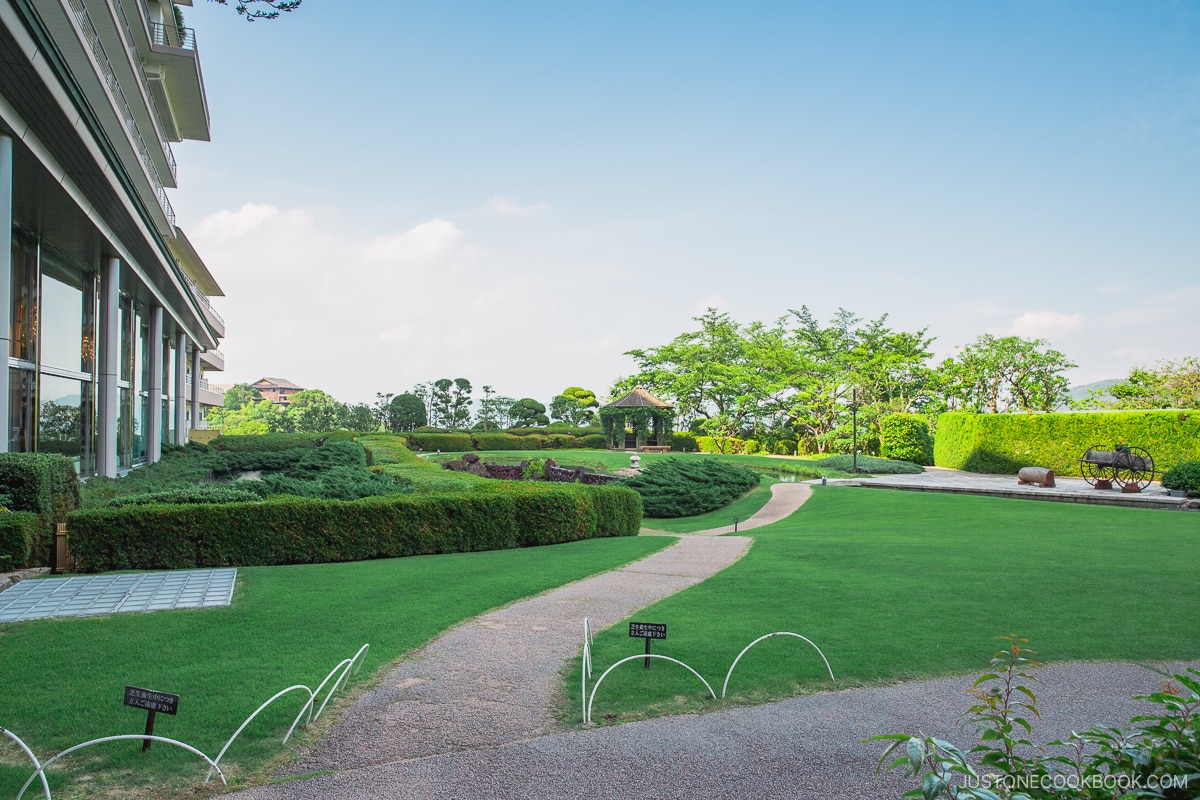
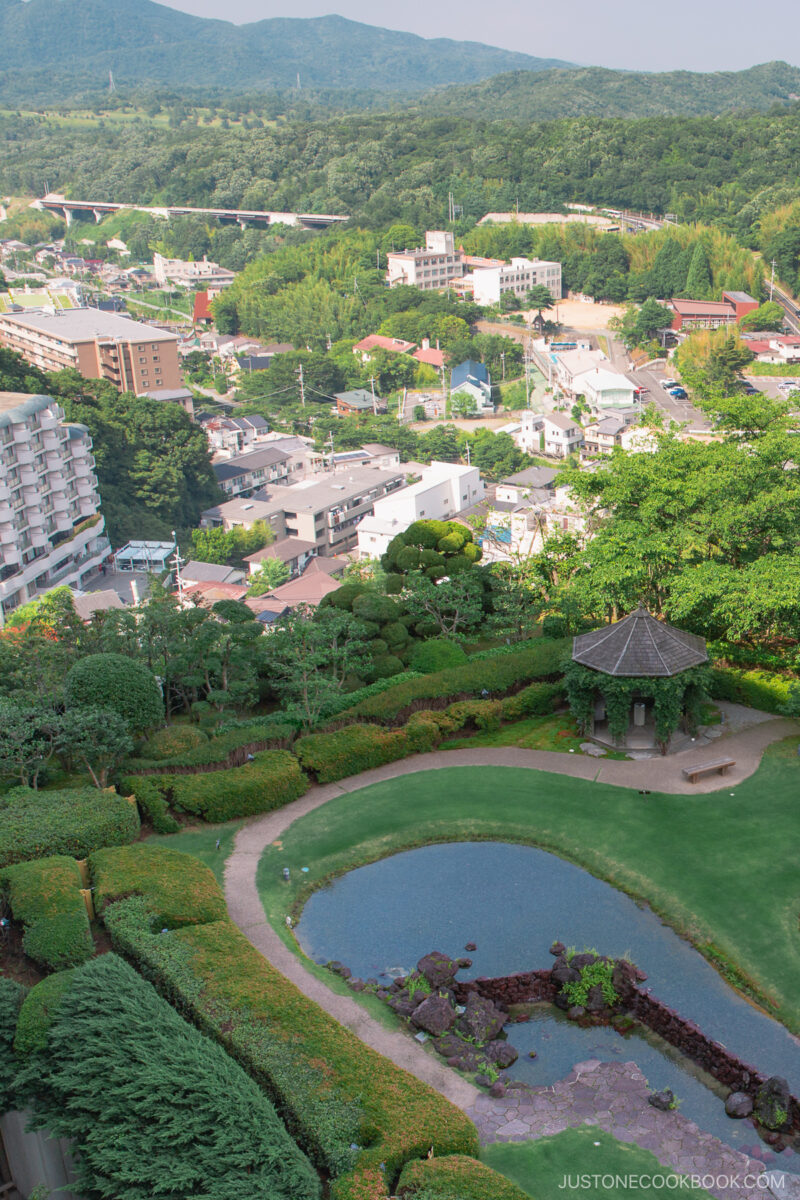
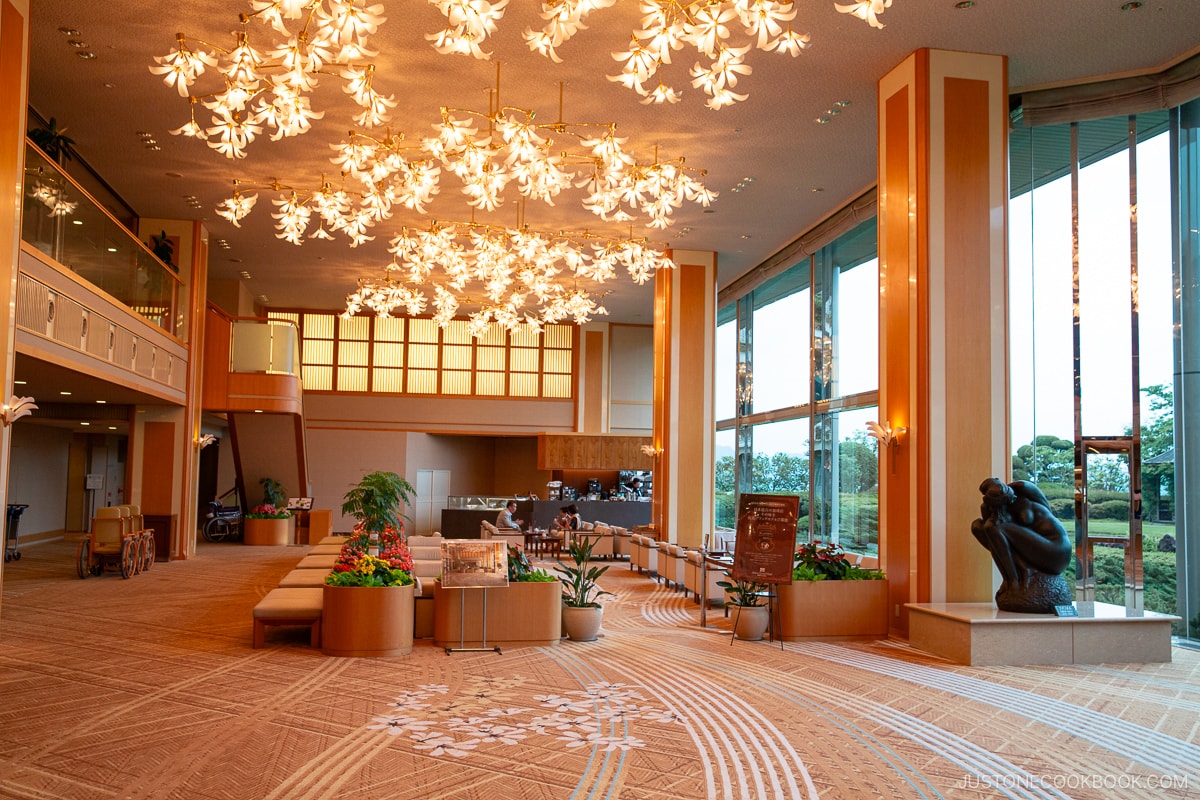
Arima Grand Hotel – Room
The standard room was typical of most Japanese ryokan setups, with the bathroom near the entrance, a Japanese-style tatami room in the center, and a sitting area by the windows. Snacks and green tea were served when we first arrived in the room.
Our amazing view looks over Arima Onsen from the room’s balcony. The sleeping arrangement was set up by the staff after dinner.
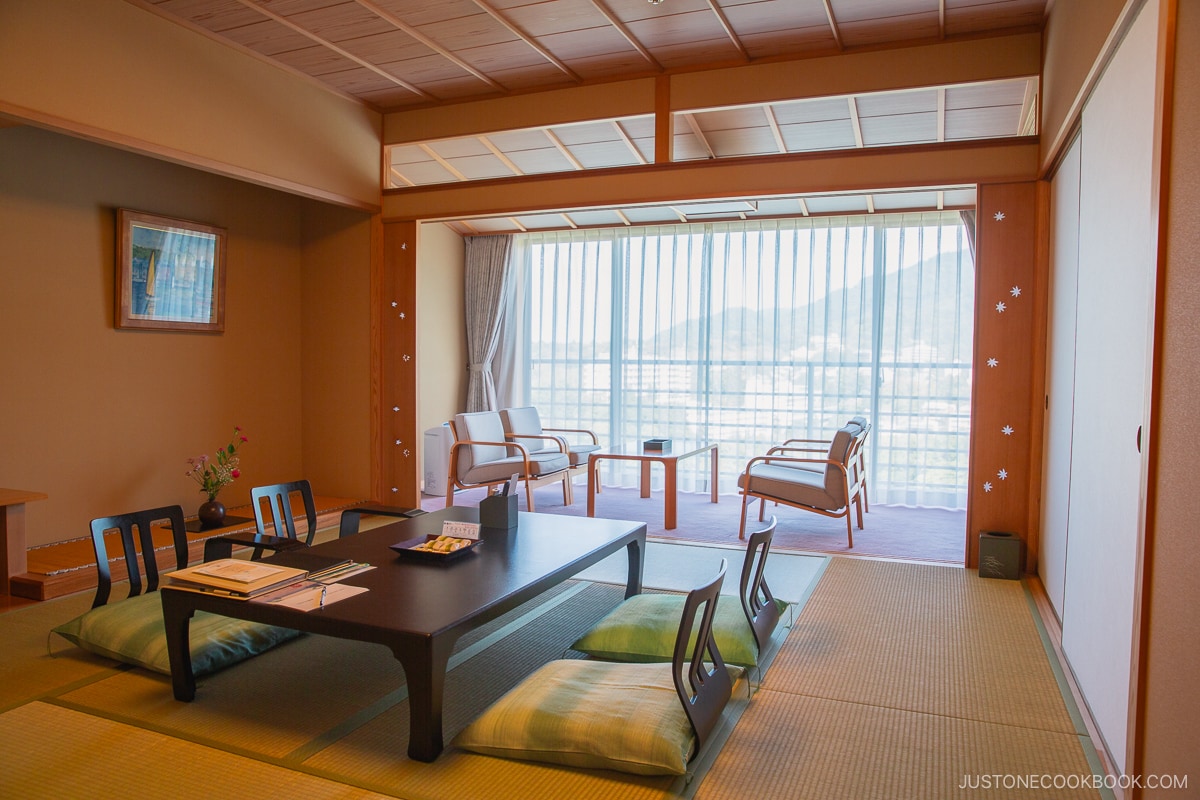
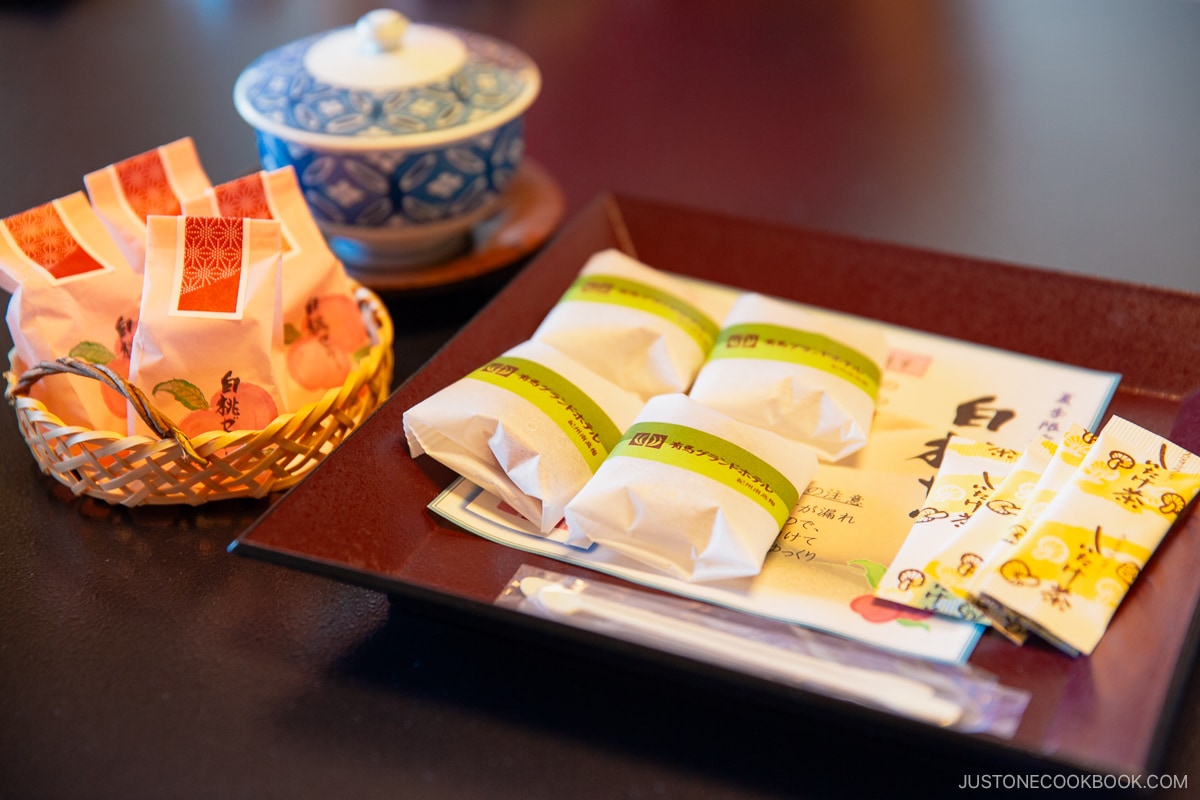
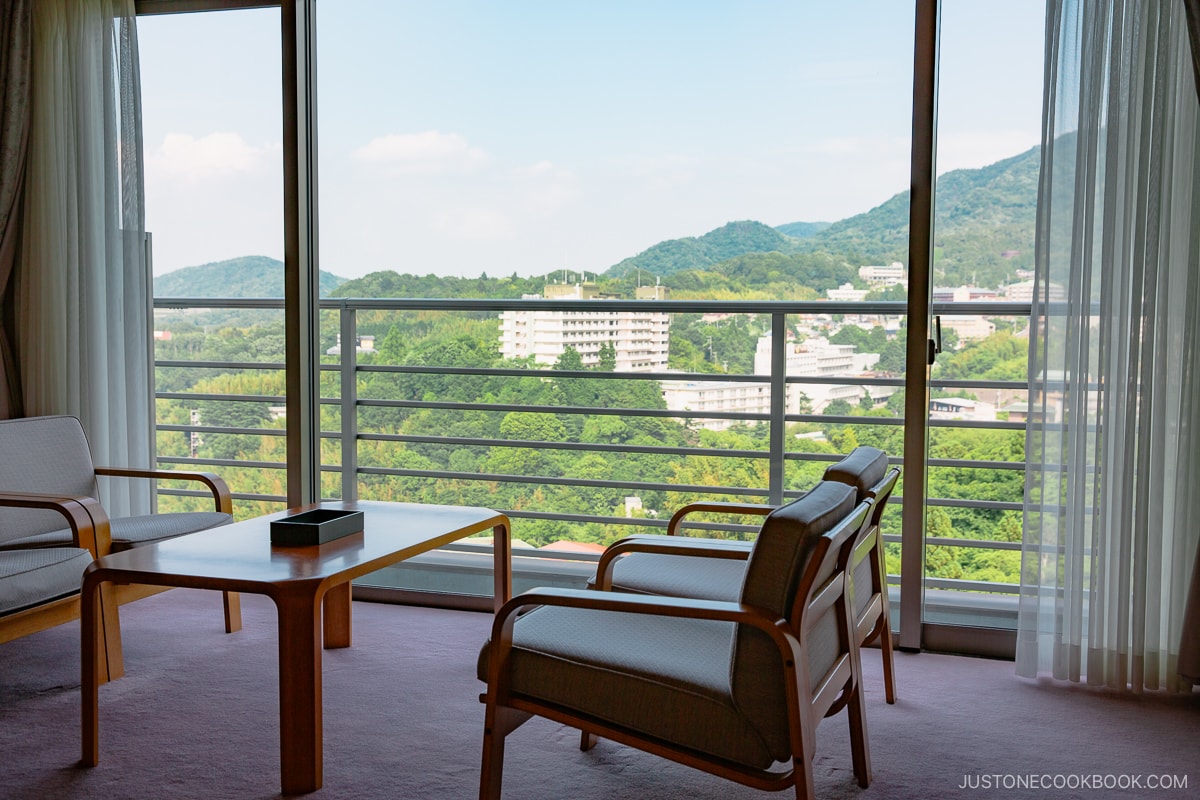
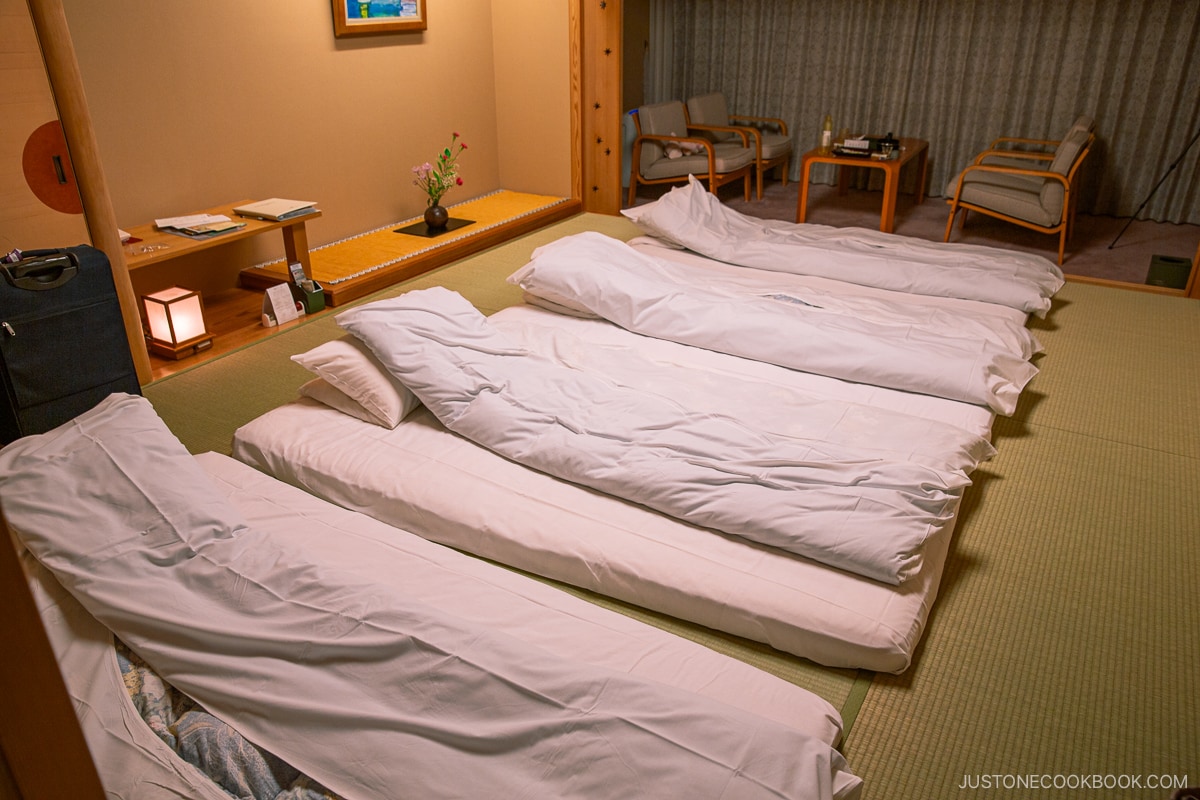
Arima Grand Hotel – Dinner
One of the highlights when staying in a Japanese hotel is the kaiseki meal they serve. When booking our hotels through JTB, we always pay attention to the food score. If you plan on dining at the hotel, aim to book one with at least 85 points.
Depending on the hotel or ryokan, dinner can be served in your room, another private room, or a large dining area. At Arima Grand Hotel, dinner was served in our room.
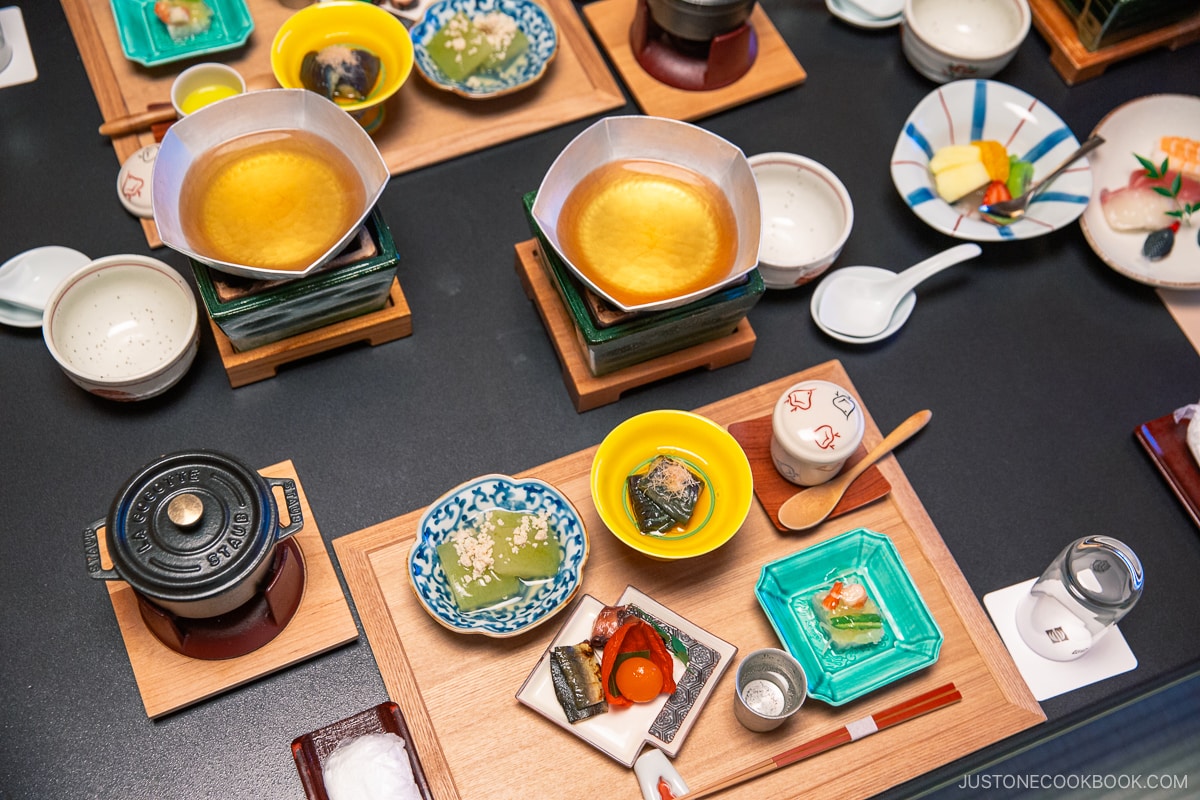
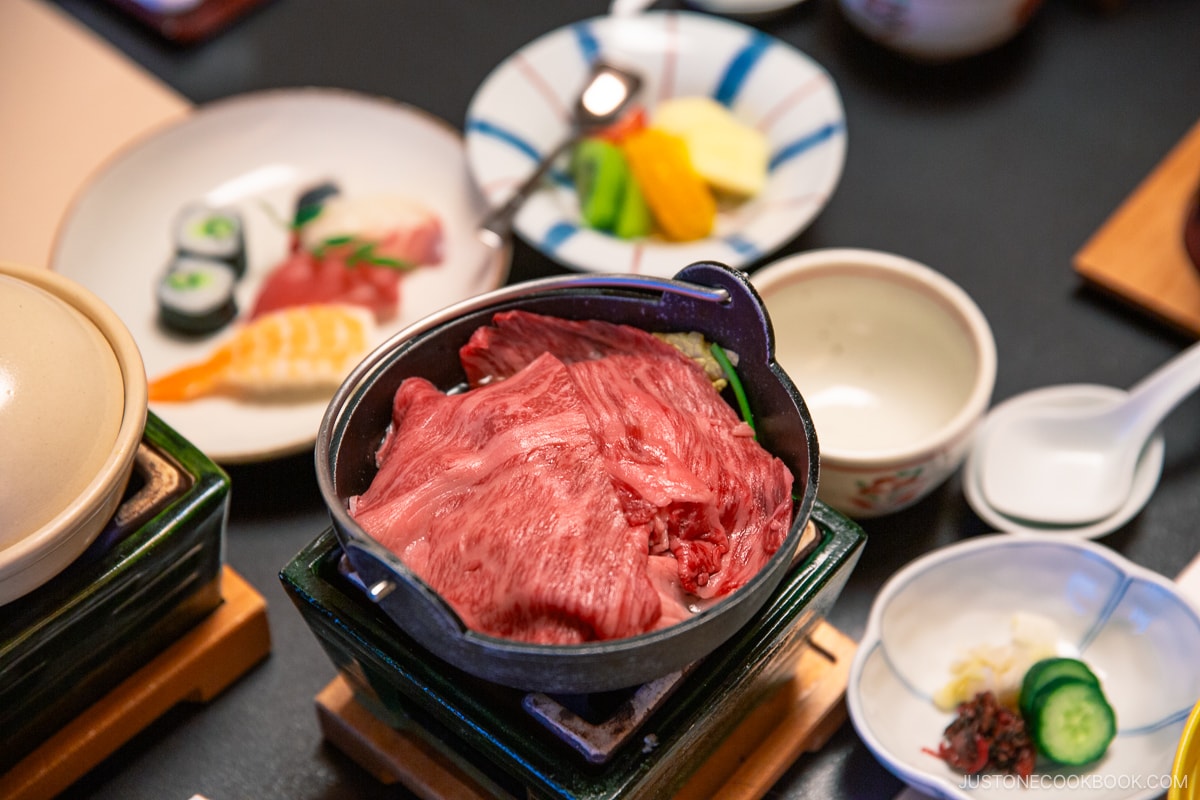
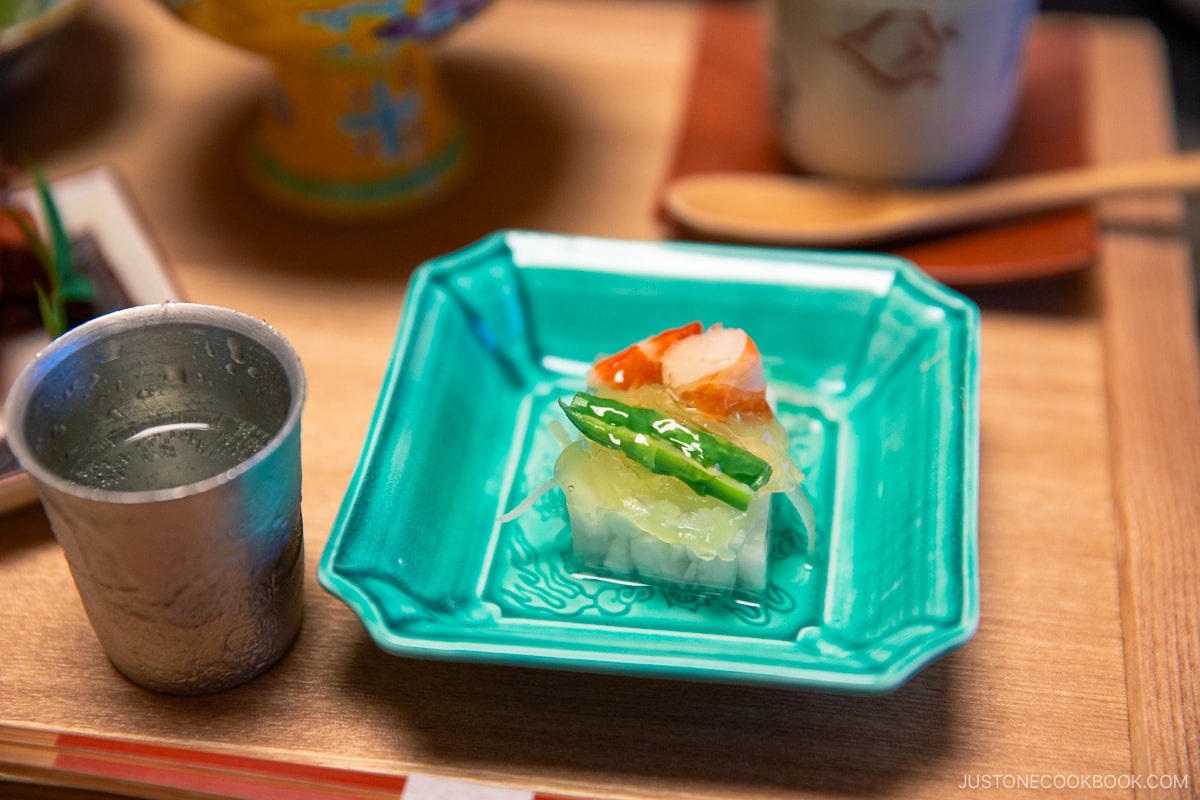
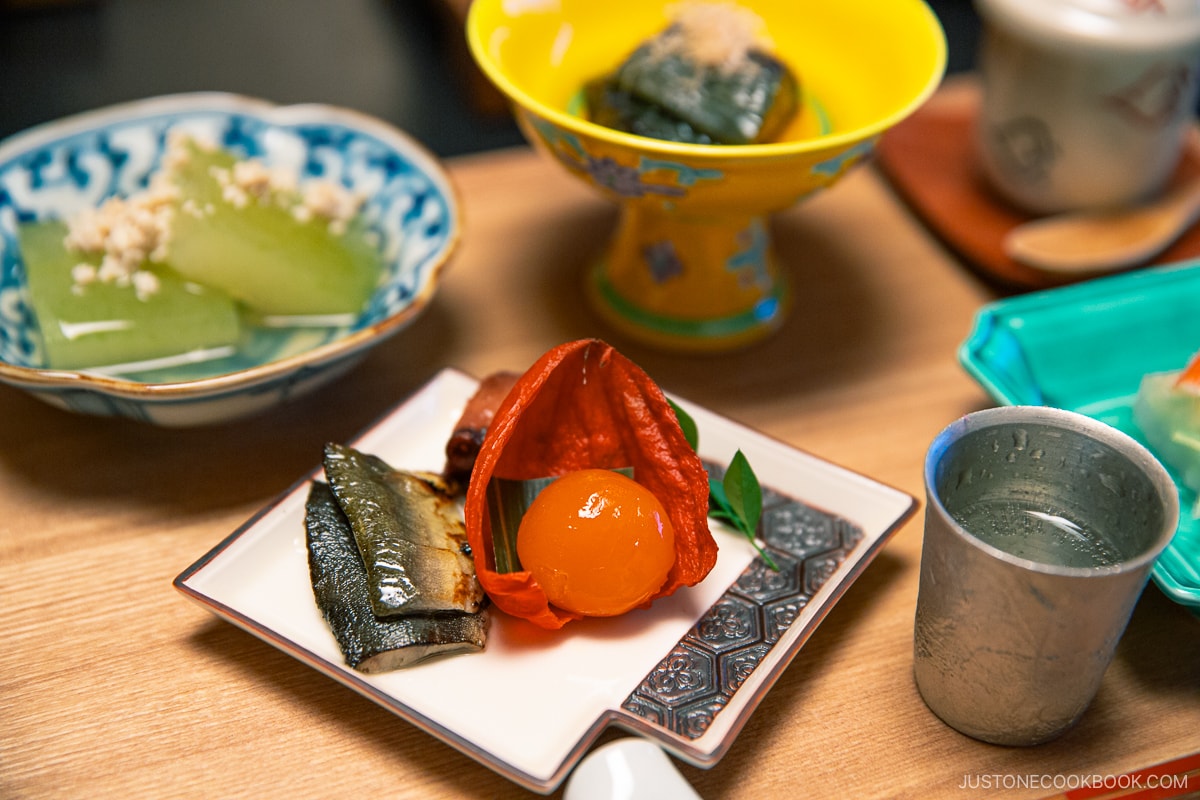
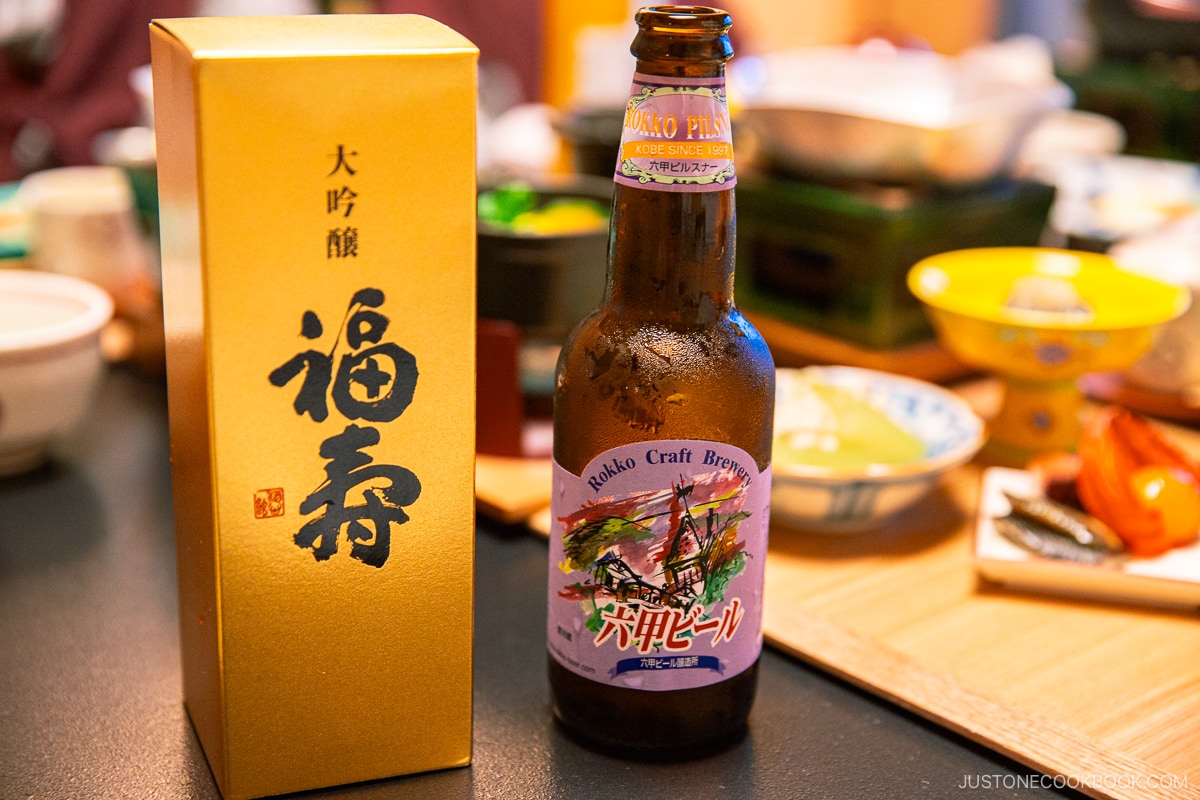
Overall, the dinner experience at Arima Grand Hotel was fantastic, and we were impressed with the presentation and taste of everything. It was the perfect amount of food for us, and all the flavors complemented each other beautifully.
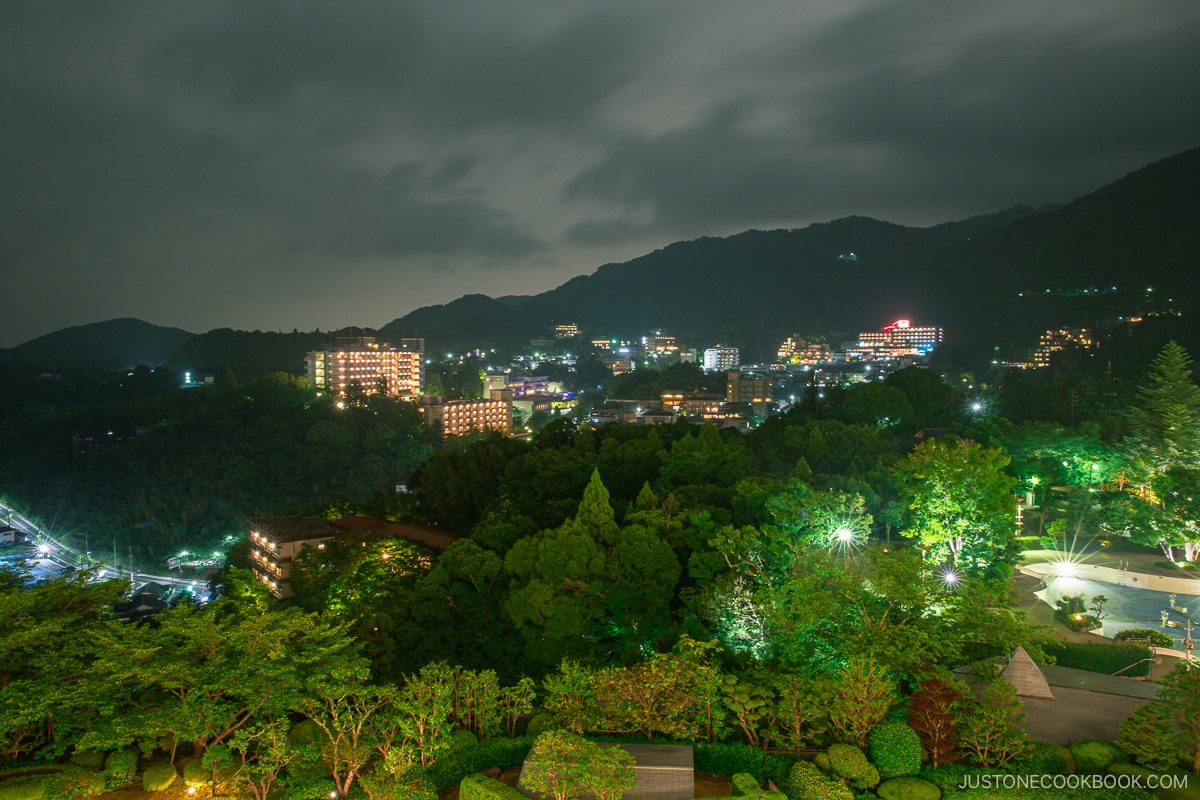
Arima Grand Hotel – Breakfast Buffet
The room package we booked also included a breakfast buffet. The quality of the buffet was pretty good and offered a wide variety of food selections. Typically, Japanese hotel buffets include both Western and Japanese dishes, as well as local specialties. You better wake up with a big appetite!
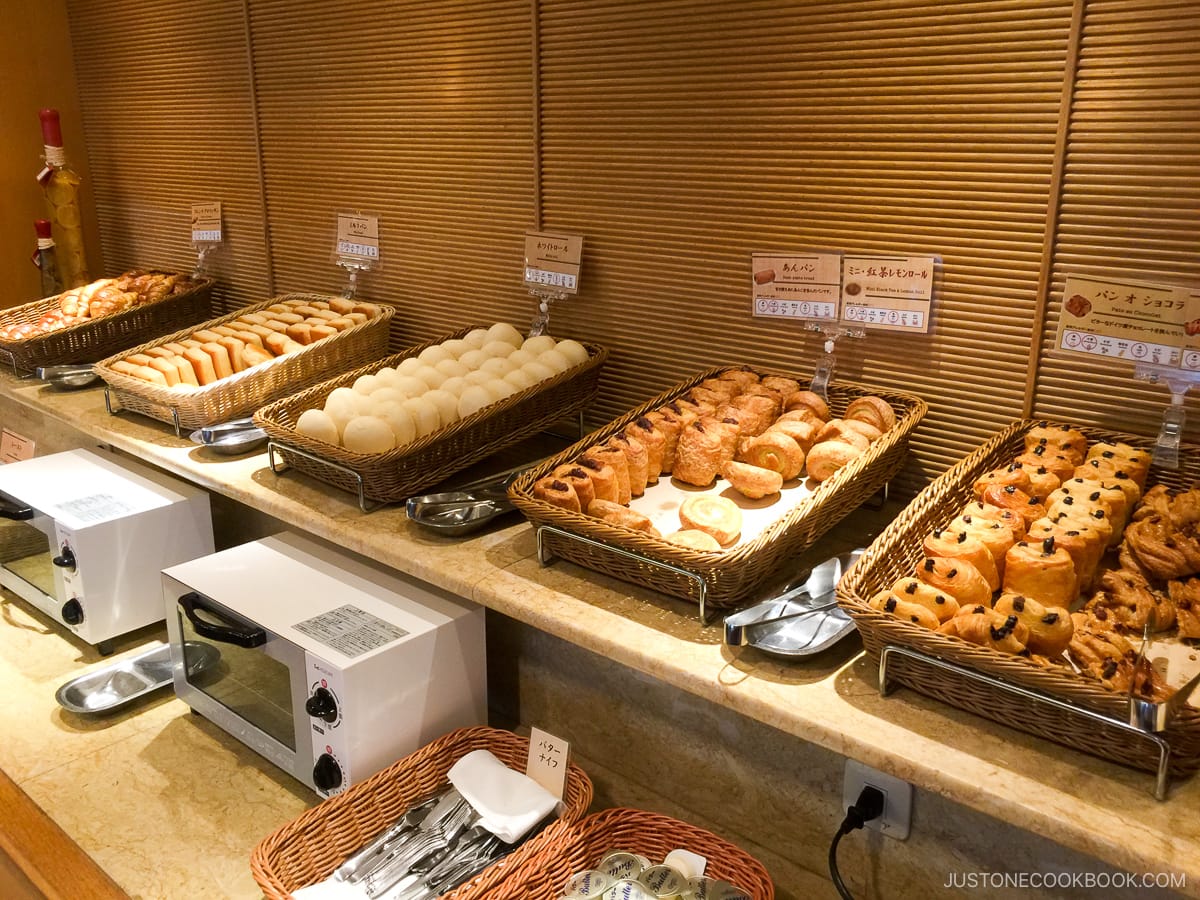
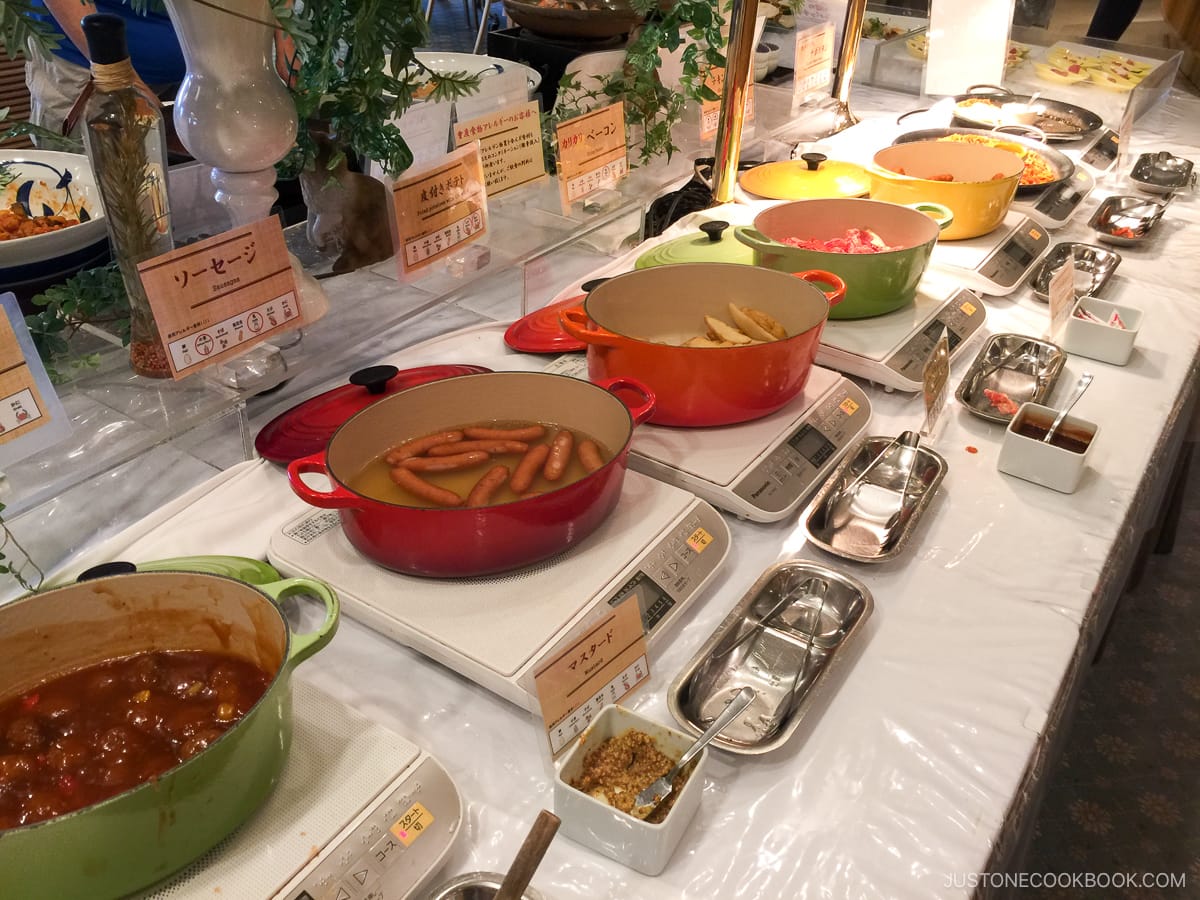
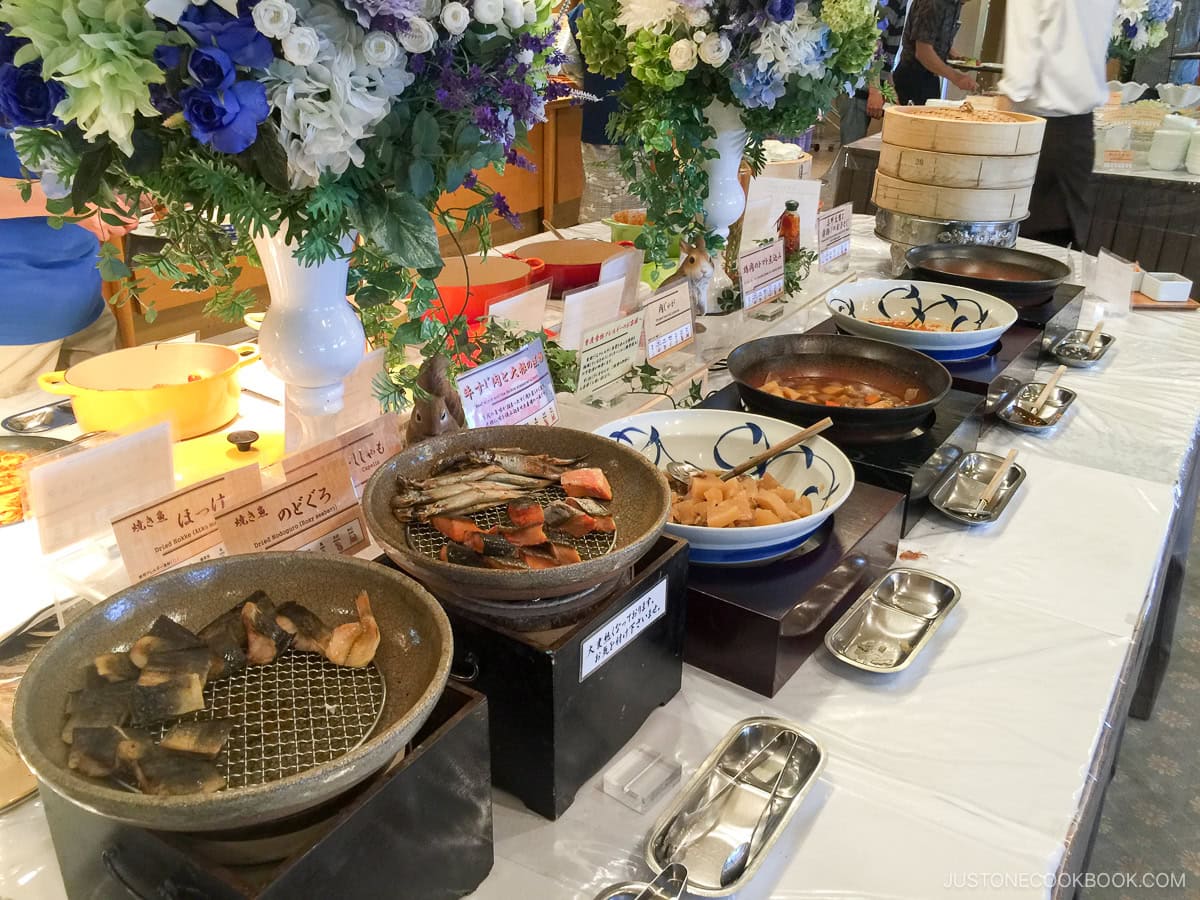
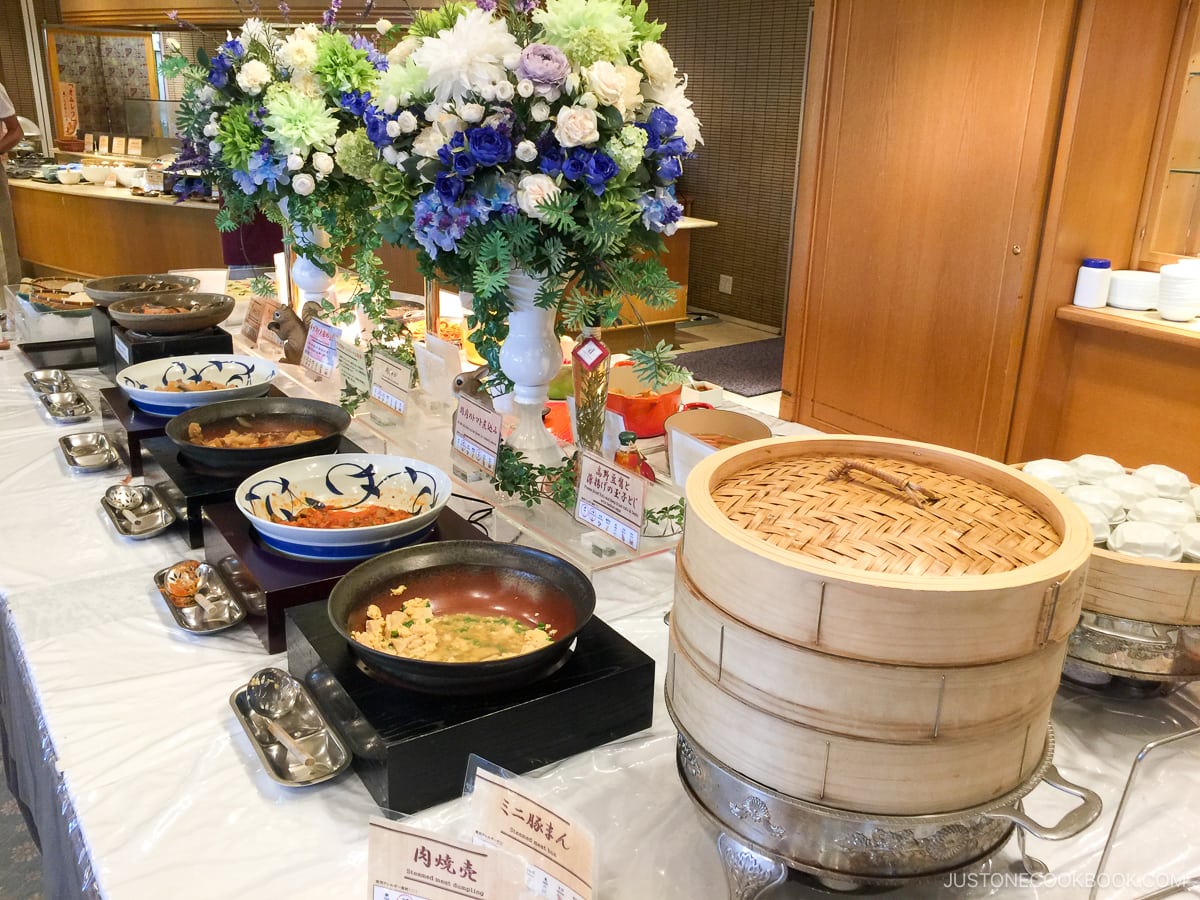
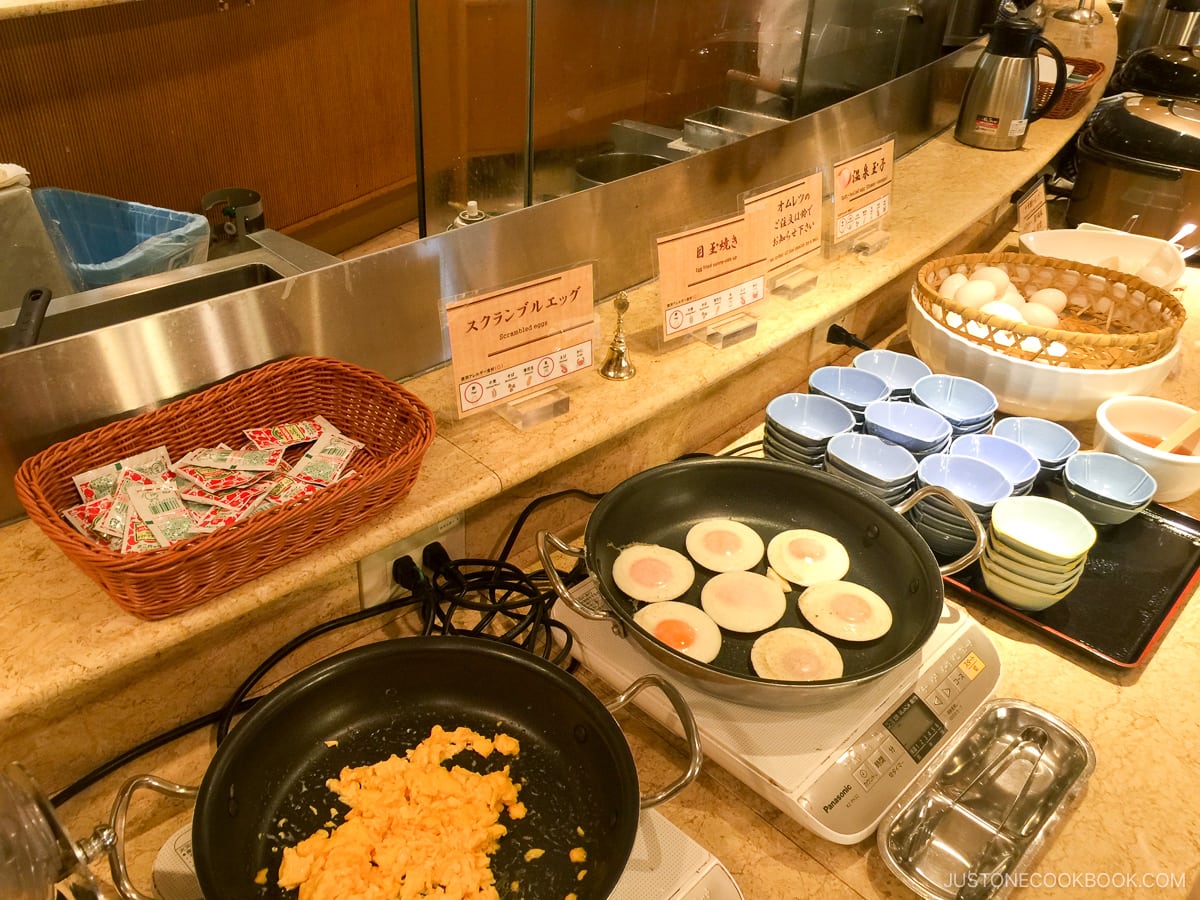
Arima Grand Hotel – Onsen Area
The hotel also offers hot springs located both on the rooftop and in the basement, both of which were exceptionally clean and inviting. On the top floor, guests can unwind in the soothing hot springs while enjoying unobstructed views of the beautiful Arima landscape. Meanwhile, on the basement floor, the outdoor bath is nestled in a serene forest setting.
Both the men’s and women’s bath areas feature gold and silver hot springs, so you have the option to relax in either or both. Since we are not allowed to take photos of the baths, please see the hotel’s website for more info.
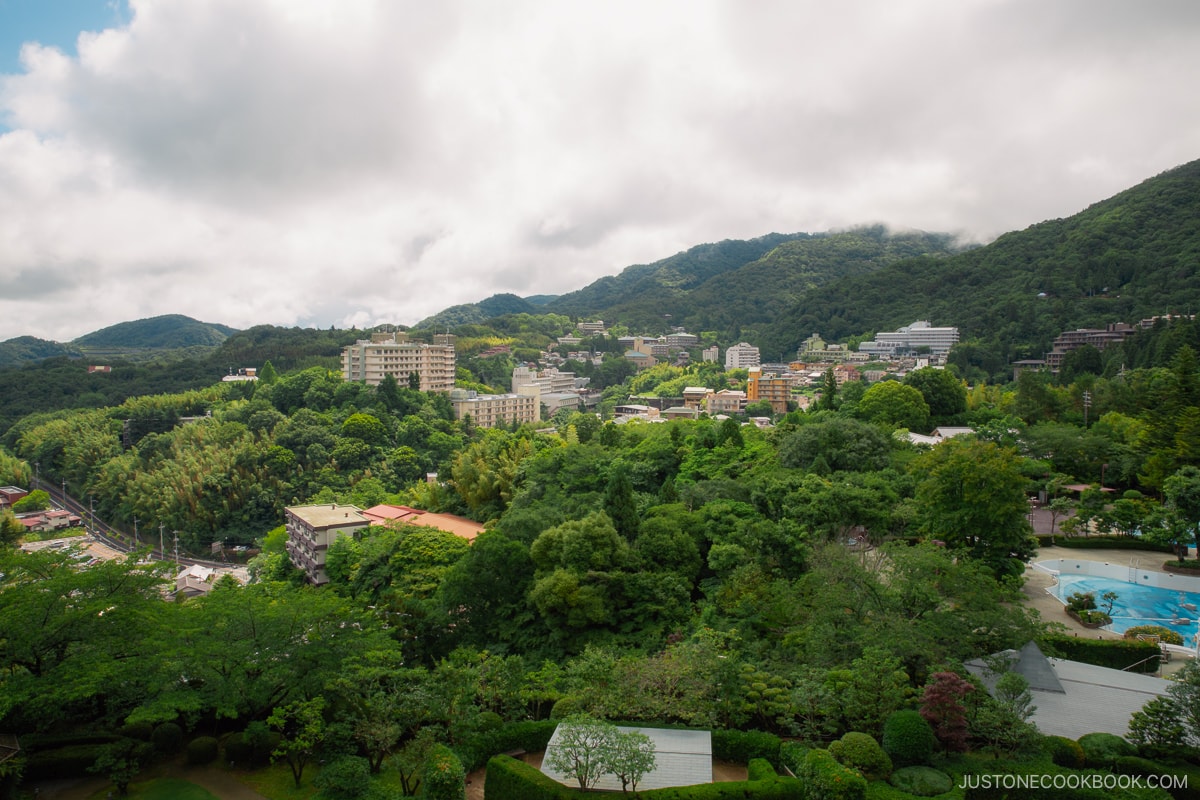
We thoroughly enjoyed our visit to Arima Onsen. For those seeking a serene hot spring experience without the crowds often found in Hakone, Arima offers so many charming elements that make it well worth a visit! Plus, it’s just a short car ride away from Osaka and Kobe, so I highly recommend stopping by and unwinding if you have the time to visit.
♨️ Bonus Read: Onsen Etiquette: Your Guide to Japanese Hot Springs
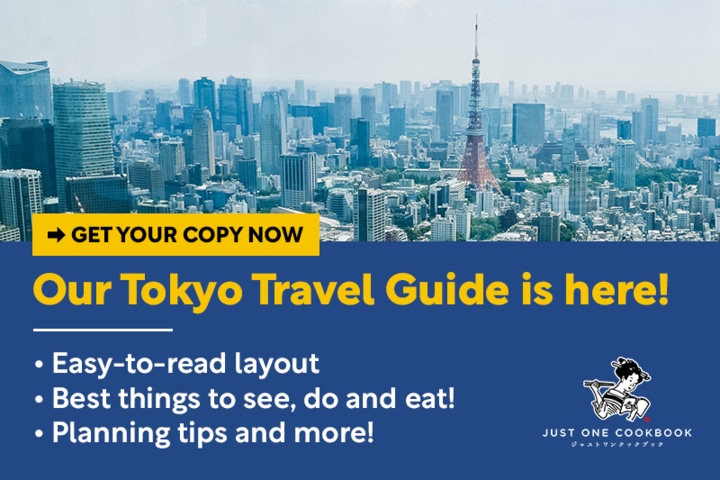
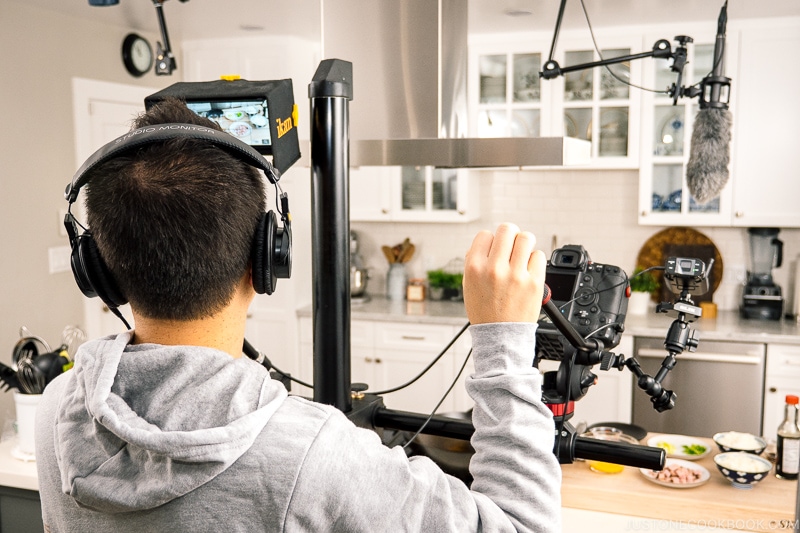









I wish I came across your blog earlier. My husband and I will be traveling to Osaka. I’m bummed out since everything is already booked. Beautiful pictures and well written guide. Thank you for sharing.
Hi Mina, Thank you for reading Nami’s post.
We hope you enjoy your stay in Osaka. If you plan to visit Japan again, we hope you check out the Arima Onsen!☺️
[…] Read more about the JOC family’s stay at Arima Onsen. […]
WOW!! You keep reminding me why I NEED to visit Japan! I might not want to leave! These pictures are SO Beautiful! Thank you for sharing! ありがとうございます!
Hi Jerry! 🙂 Glad to know I could share some pictures from Japan! 🙂 ありがとう、ジェリー!
Hello Nami
I hope that I am able to travel to Japan next year. Your travel blog gives me some great ideas for places to visit, just like this Armia Onsen.
Thank you for sharing your experiences.
Hi Sonja! Thank you for reading my travel post! I’m happy to hear I could inspire you to visit Japan. 😀 Hope you’ll enjoy upcoming travel posts too!
Hi, I am back home from Japan. Me and my friend got to go to Kyoto and Osaka to do some sightseeing. And of course I went to visit my mother. My home is in Kawanishi and I went to Myokensan which is a mountain in the north part of Hyogo prefecture. I didn’t have much time to wonder around but it is always nice to get back to Japan.
Arima onsen I might try it the next time I get back to Japan.
Waiting for a new recipe!!!
Hi Ranko! Your mom’s place is not too far from Arima Onsen, and it’s such an easy access from major stations like Kobe, Sannomiya, or even Osaka. 🙂
I’ve never been to Myokensan. I just googled and saw interesting architecture too! Thanks for sharing, maybe one day we will have a chance to visit there. 🙂
One day I will visit Japan and do and eat most of the things you posted. Its so nice in there 🙂
And I hope I can meet you there too! 😉